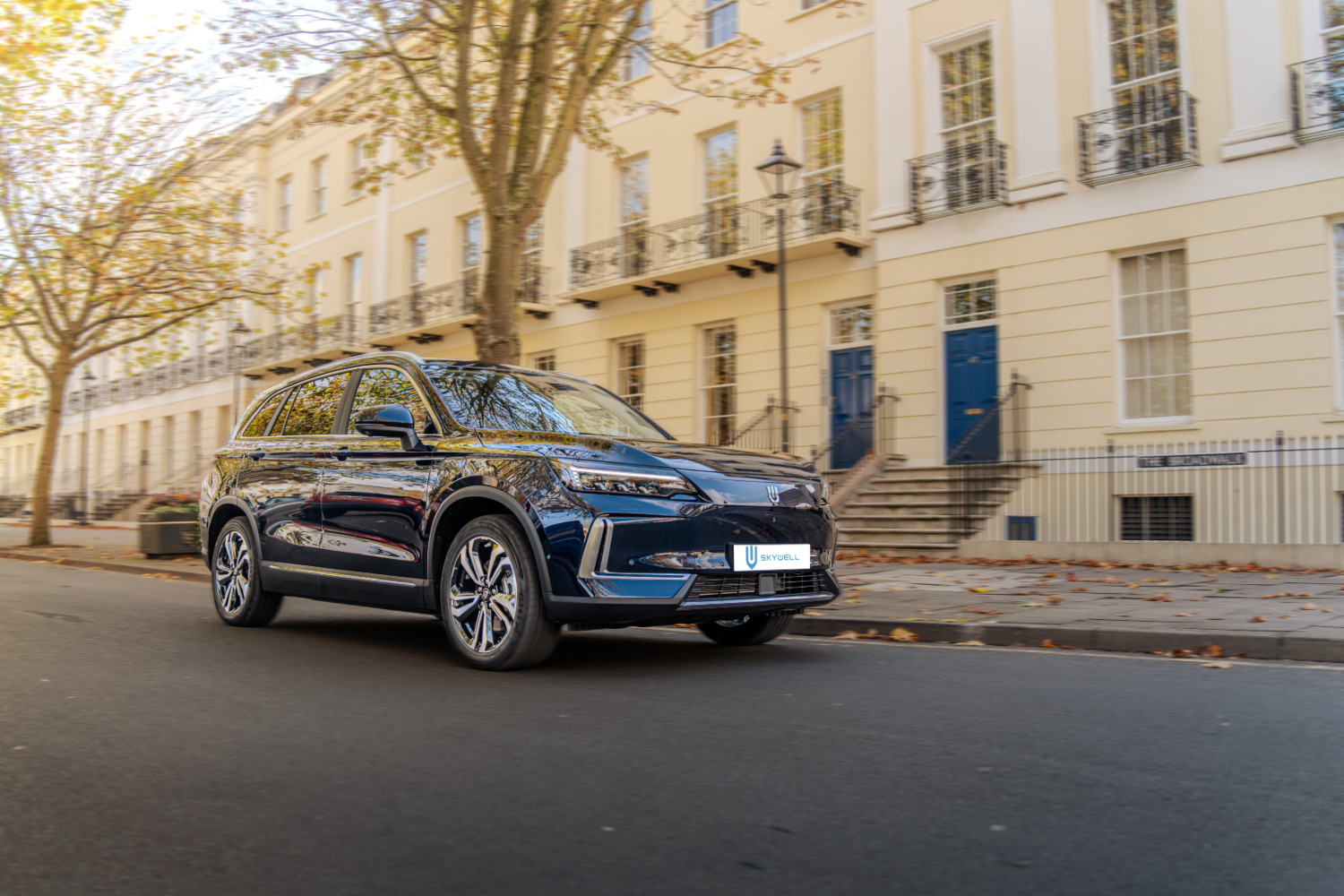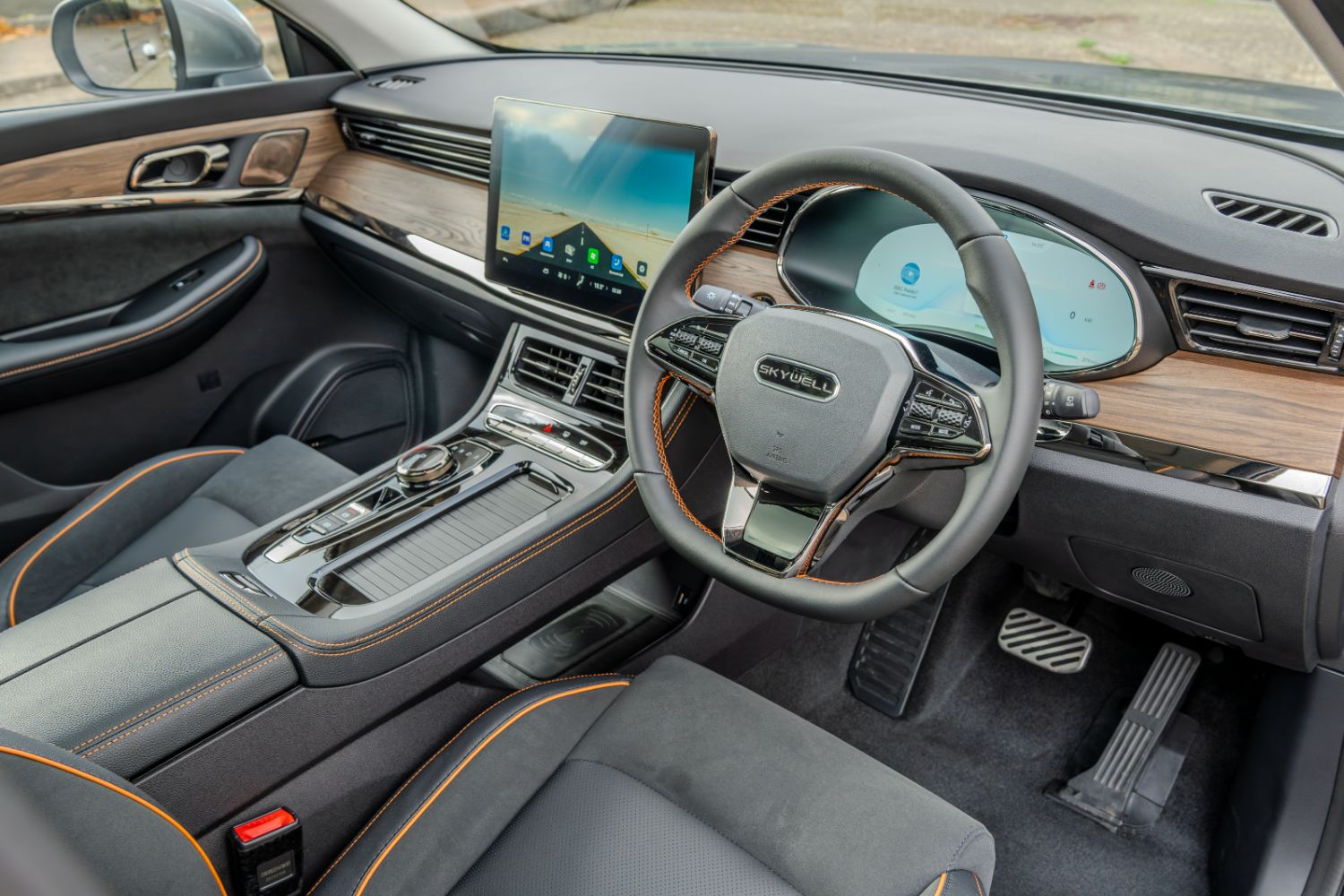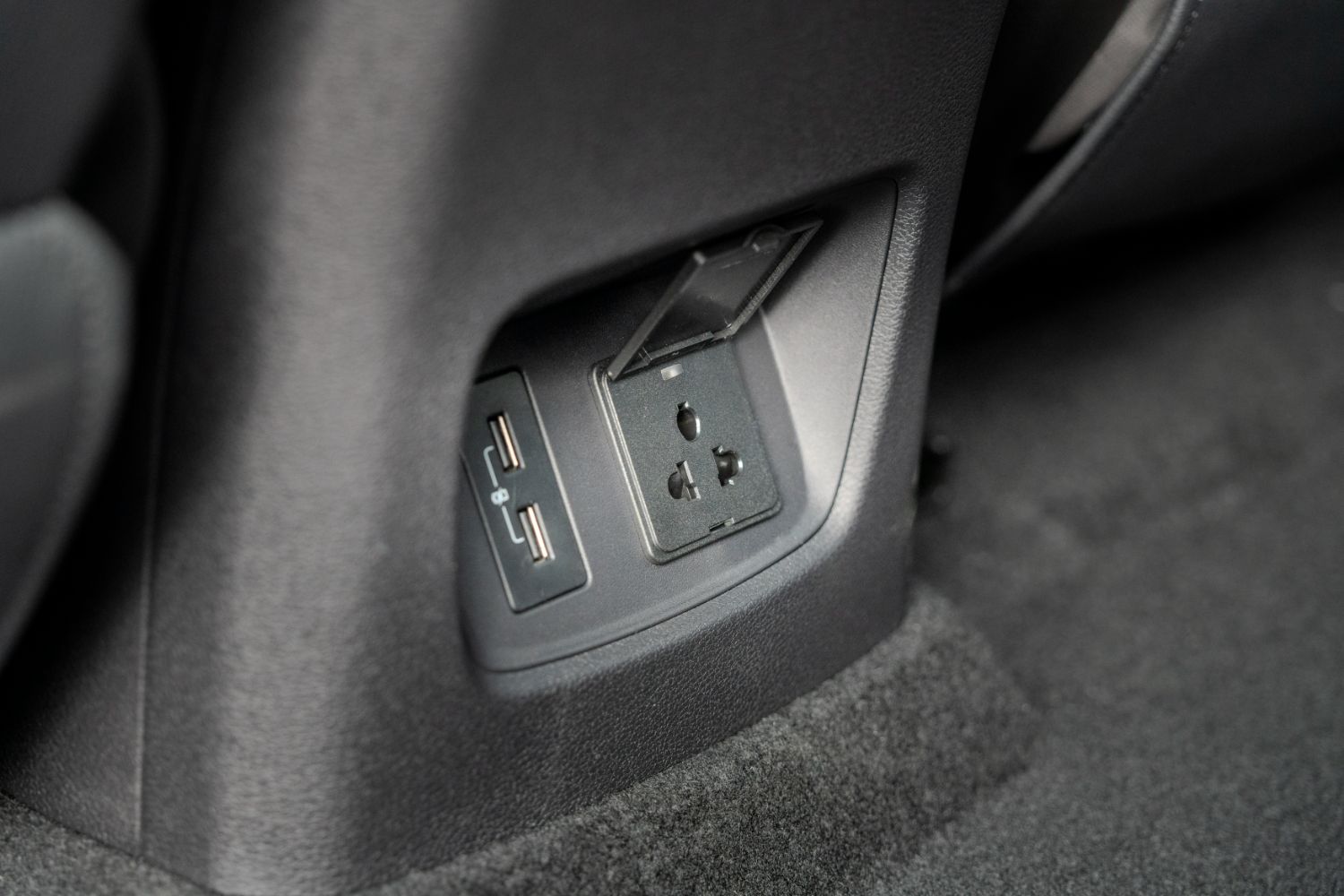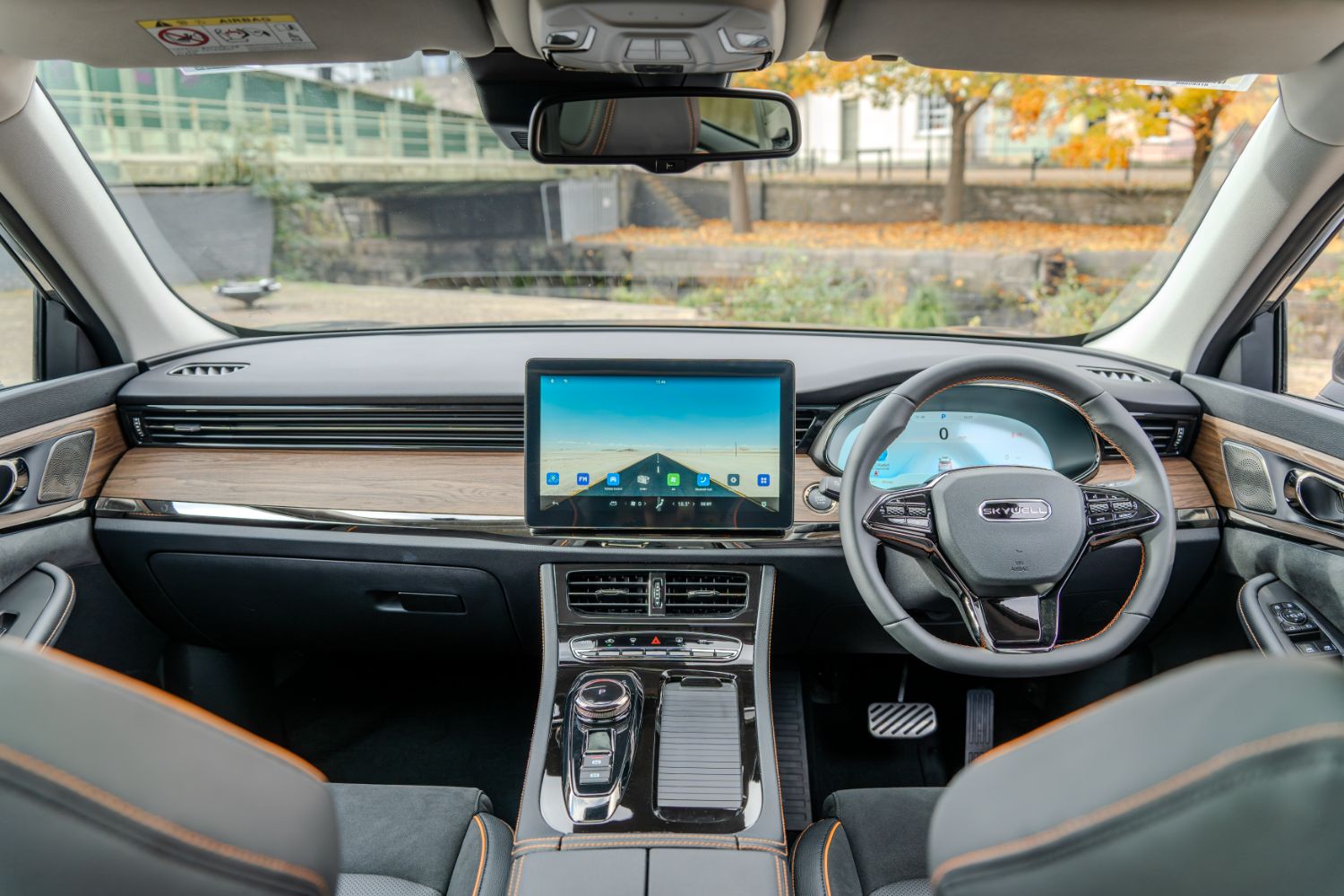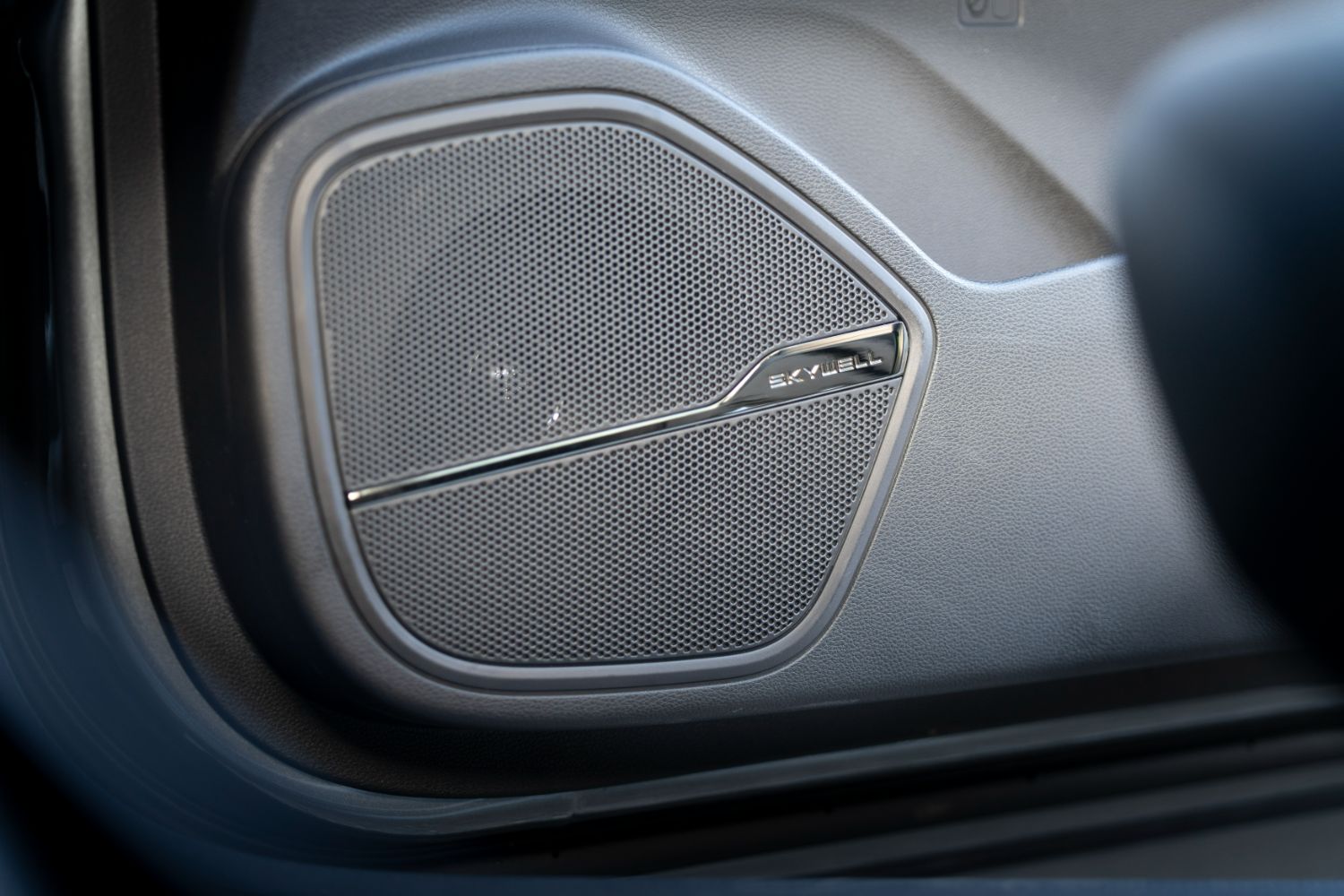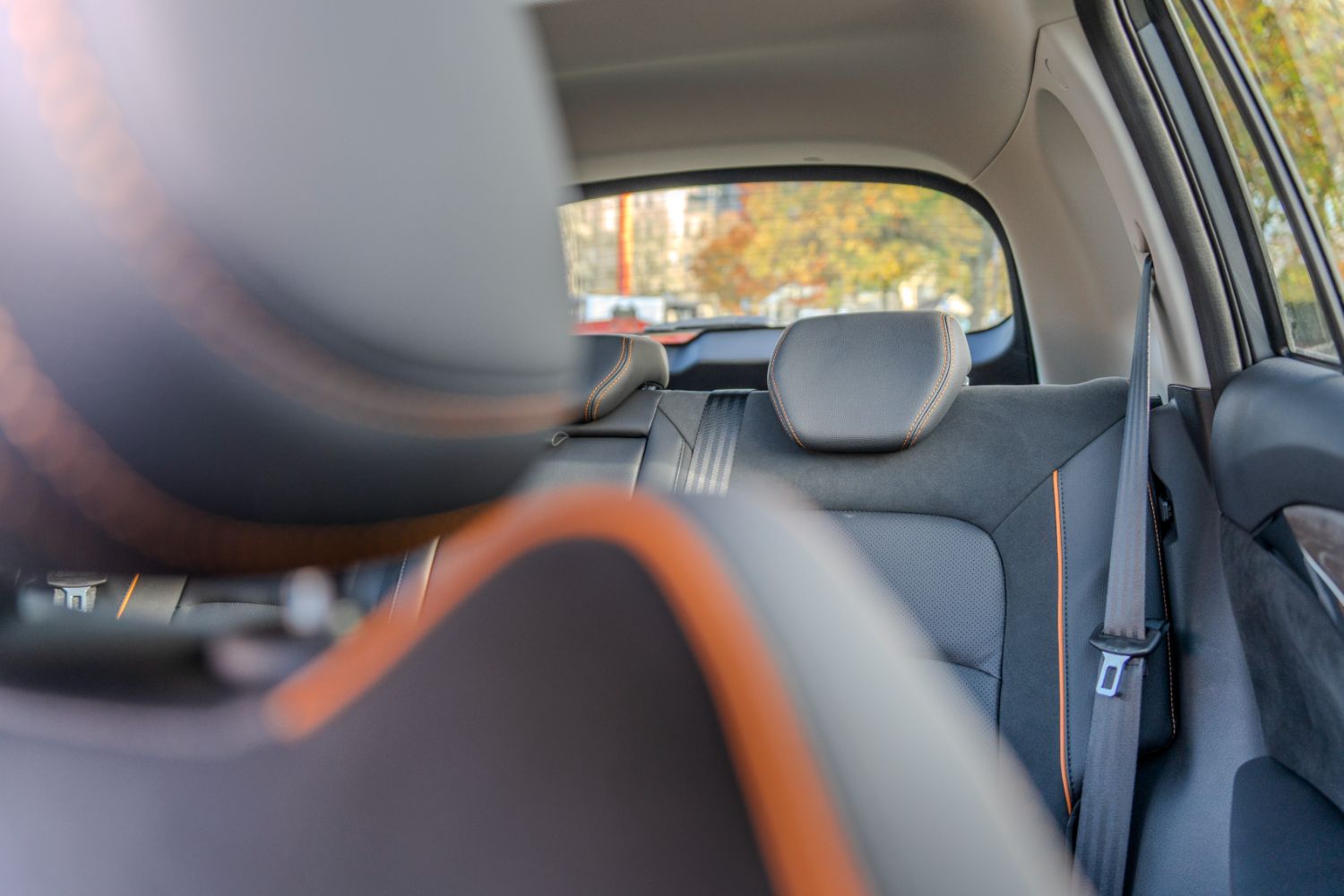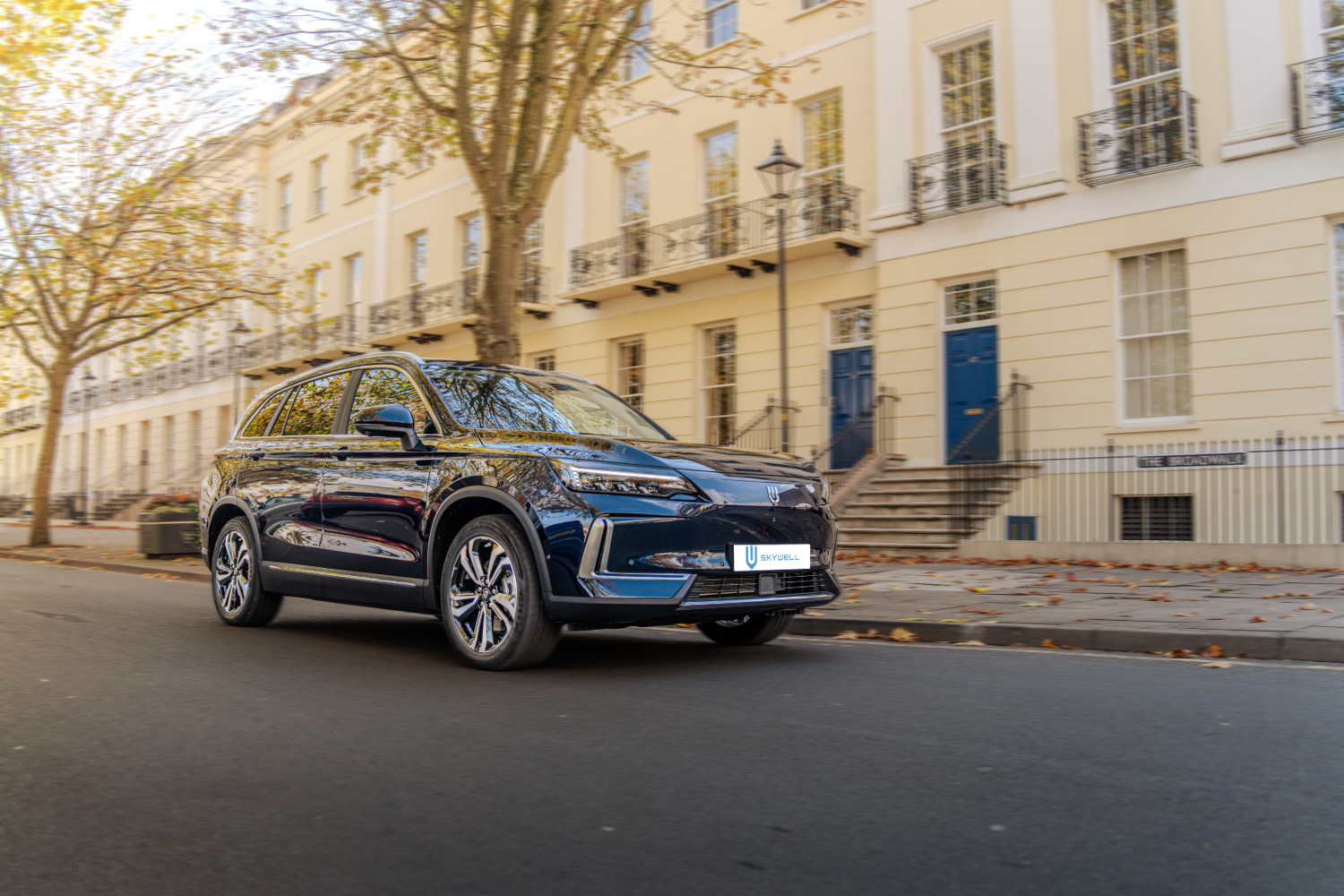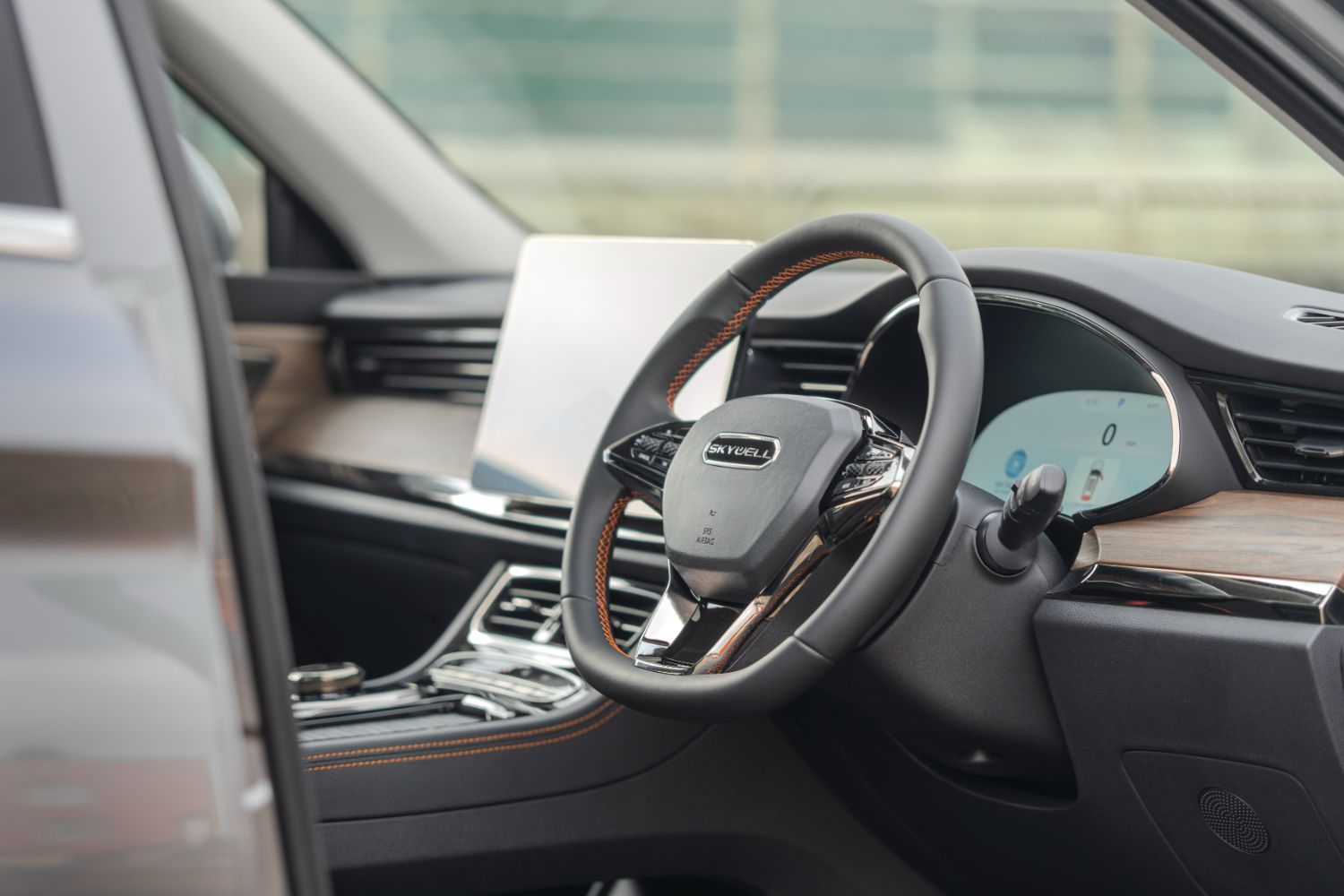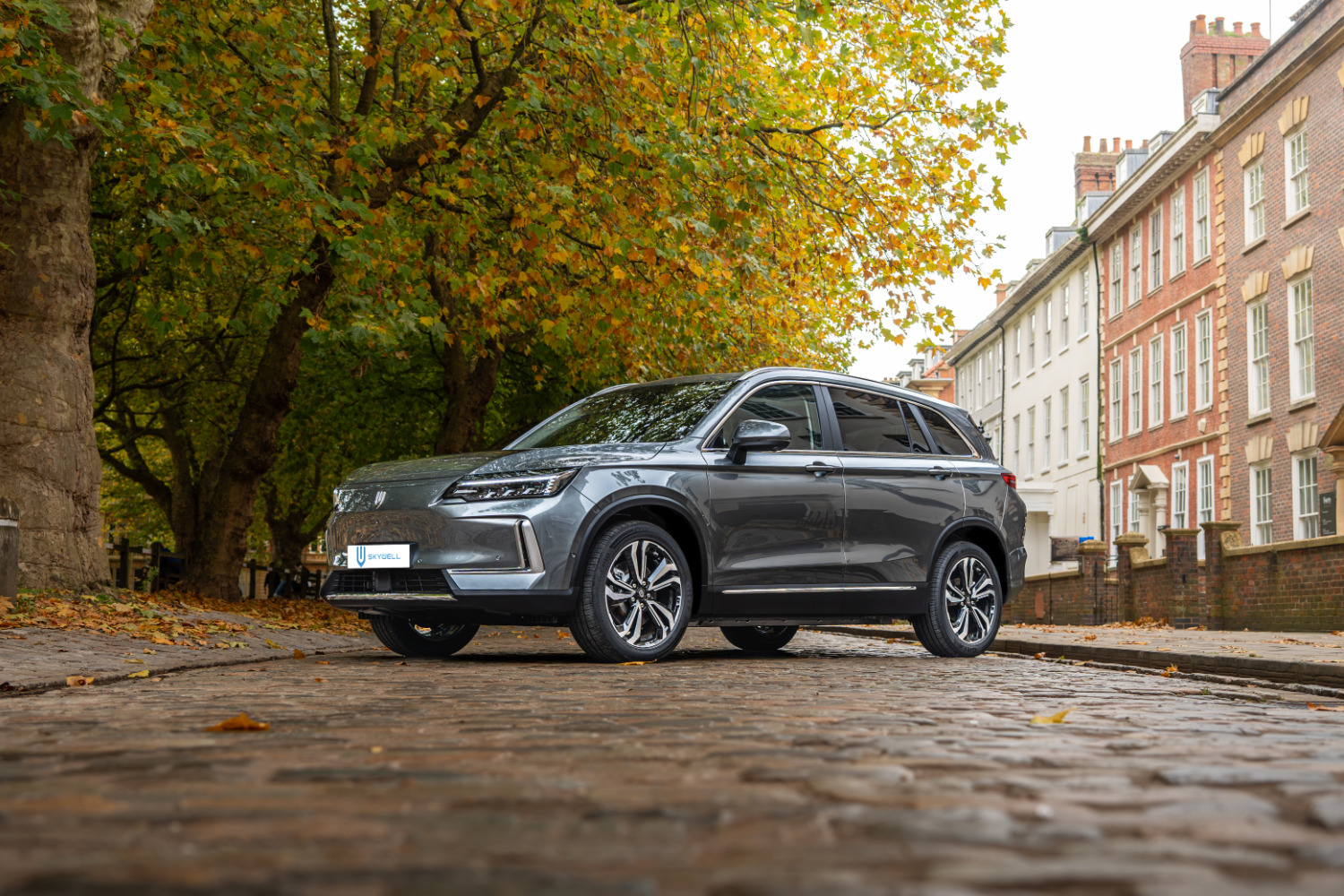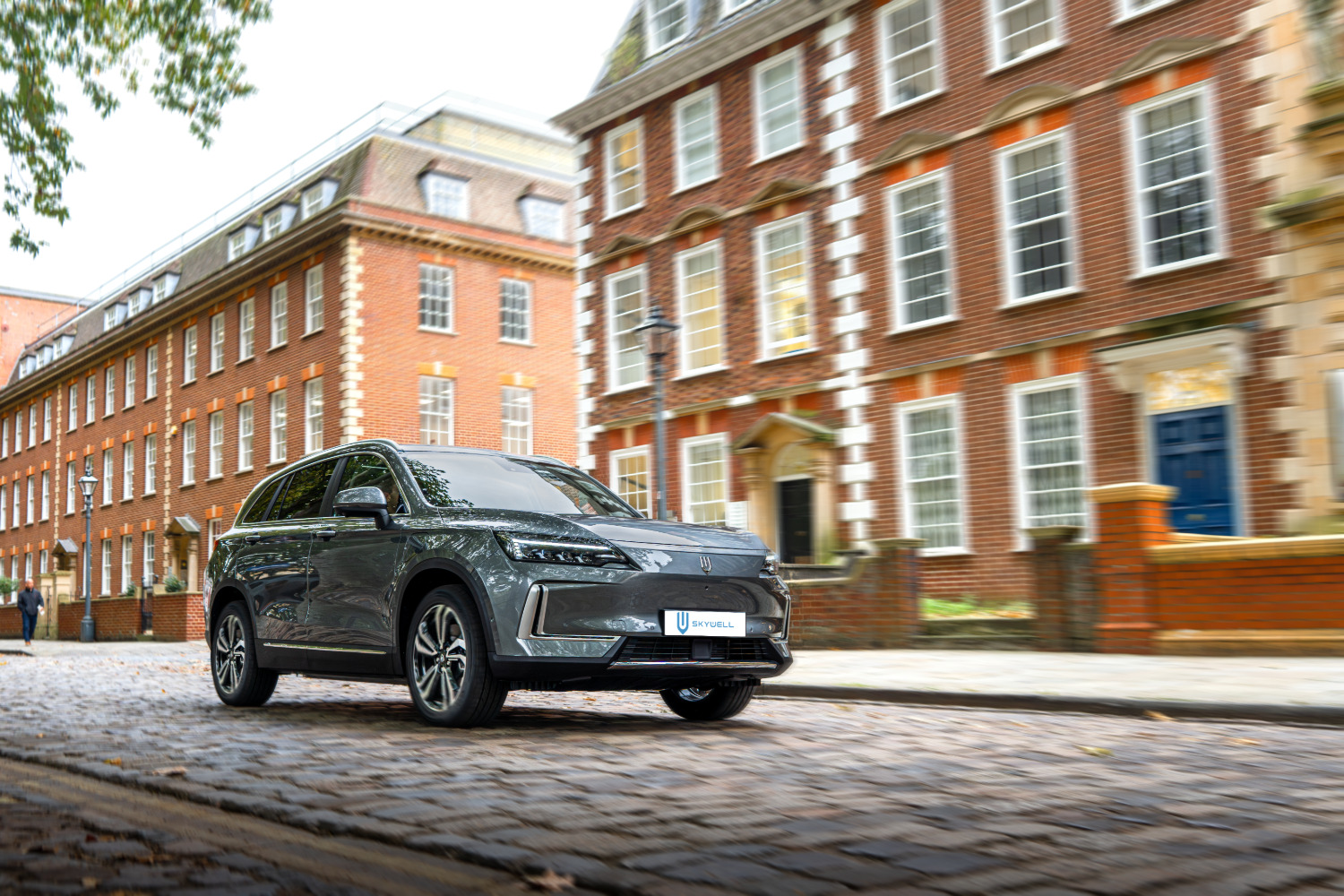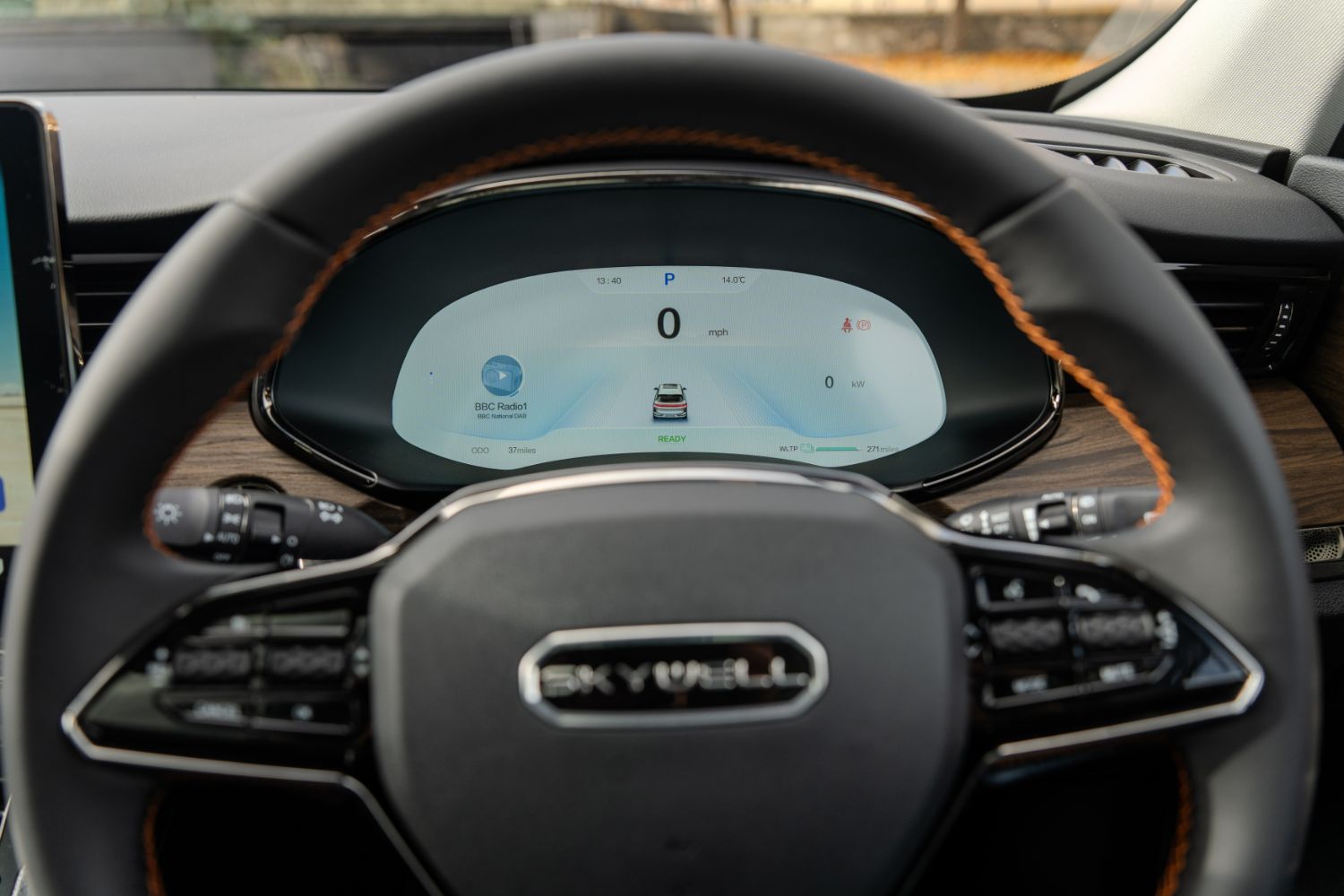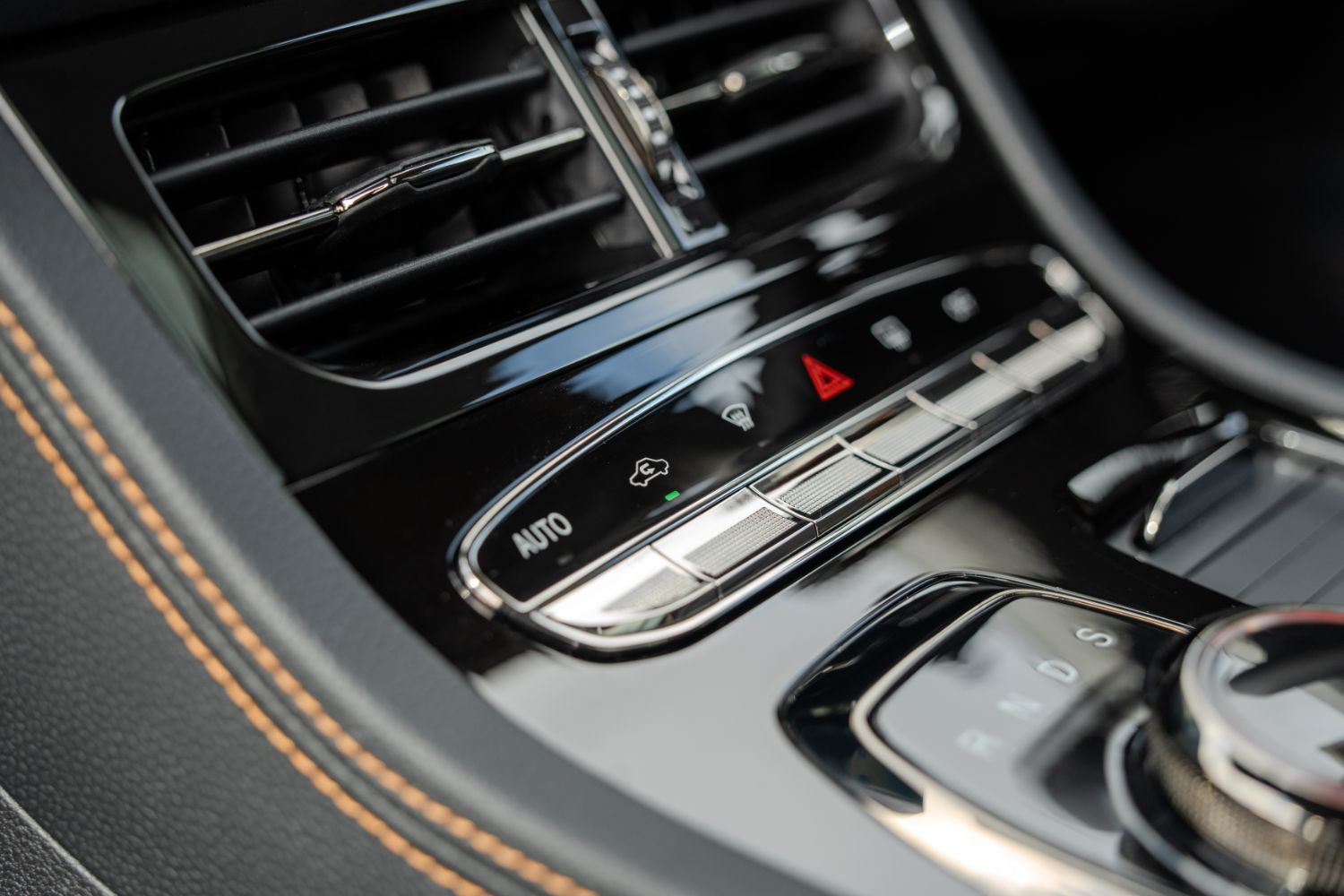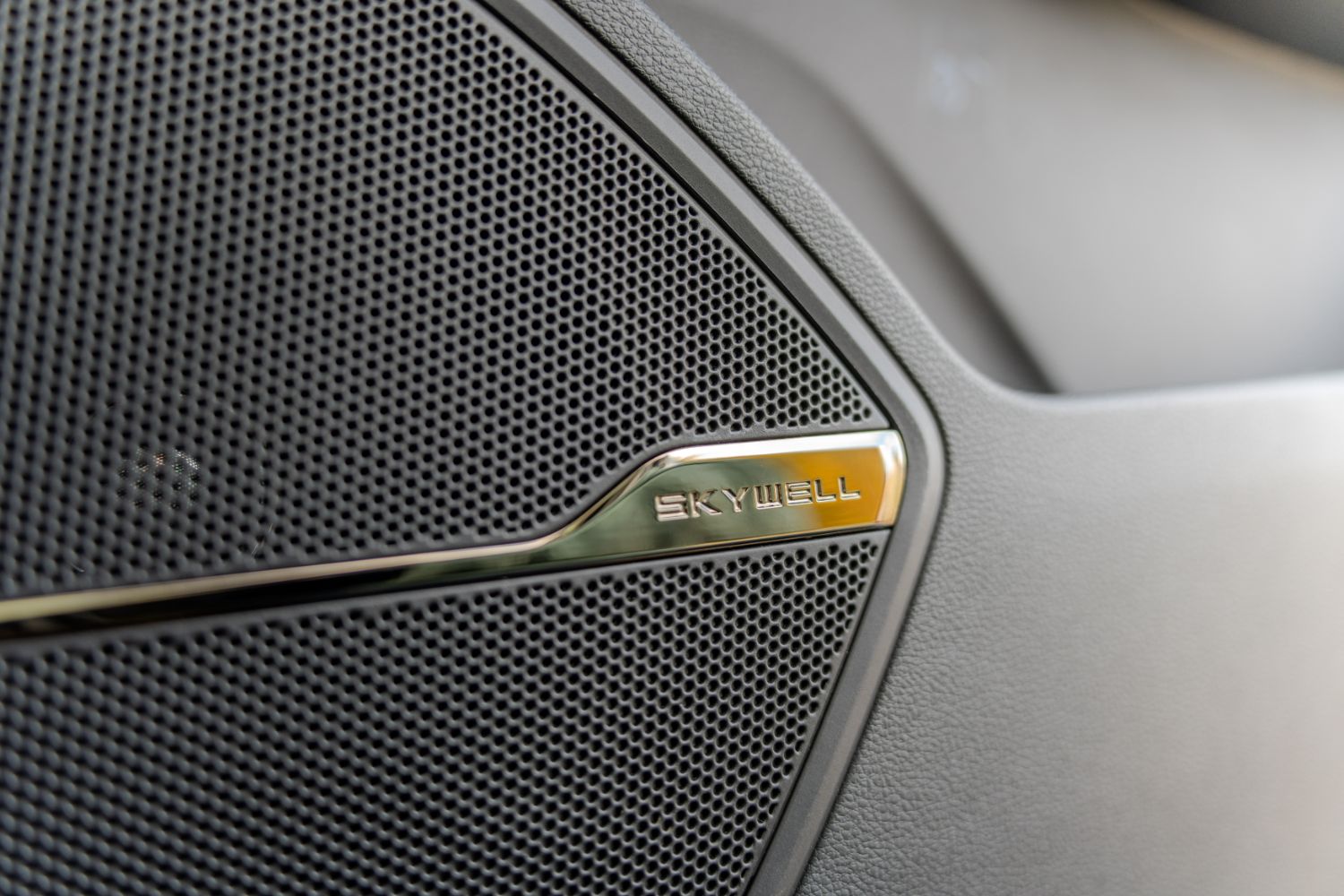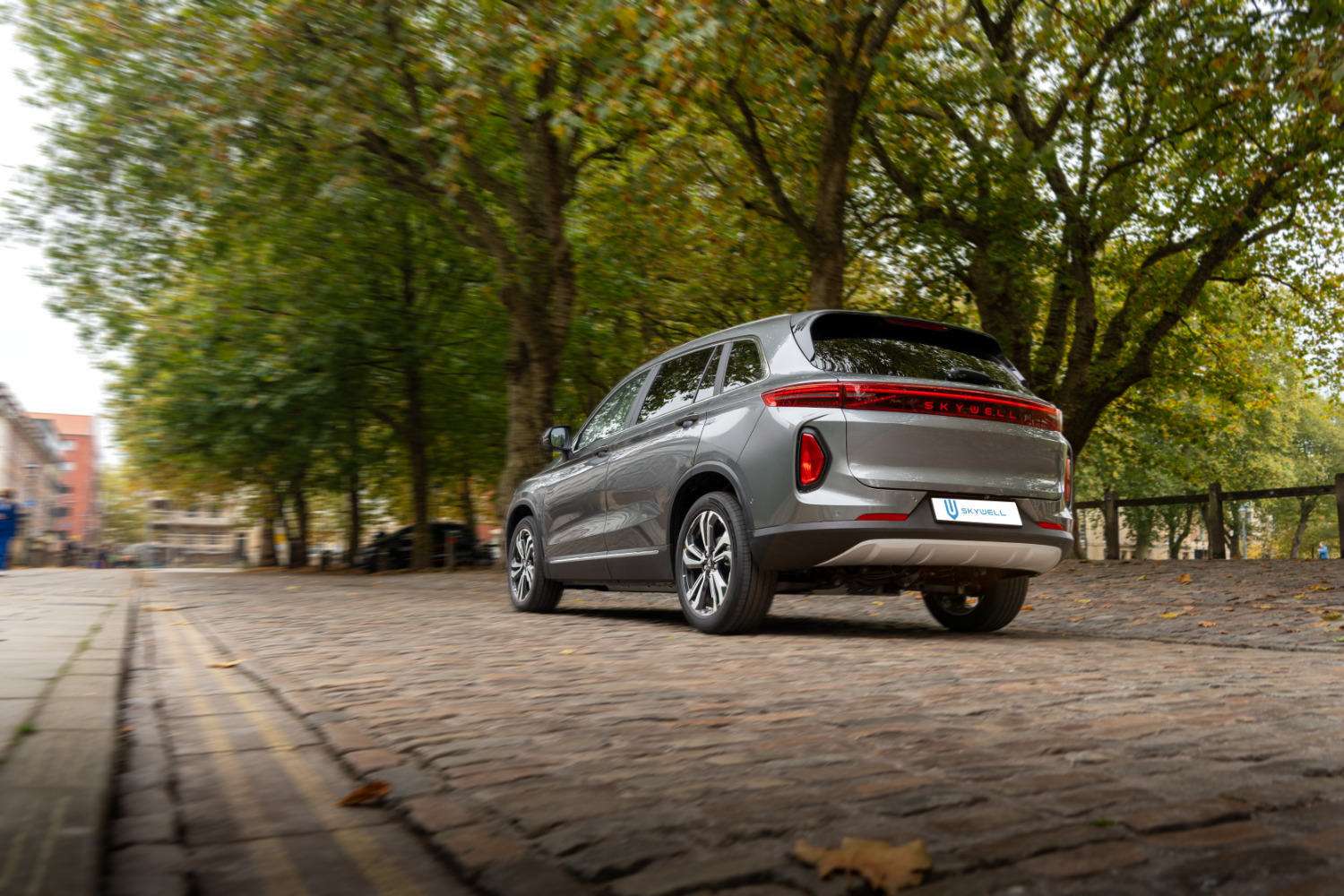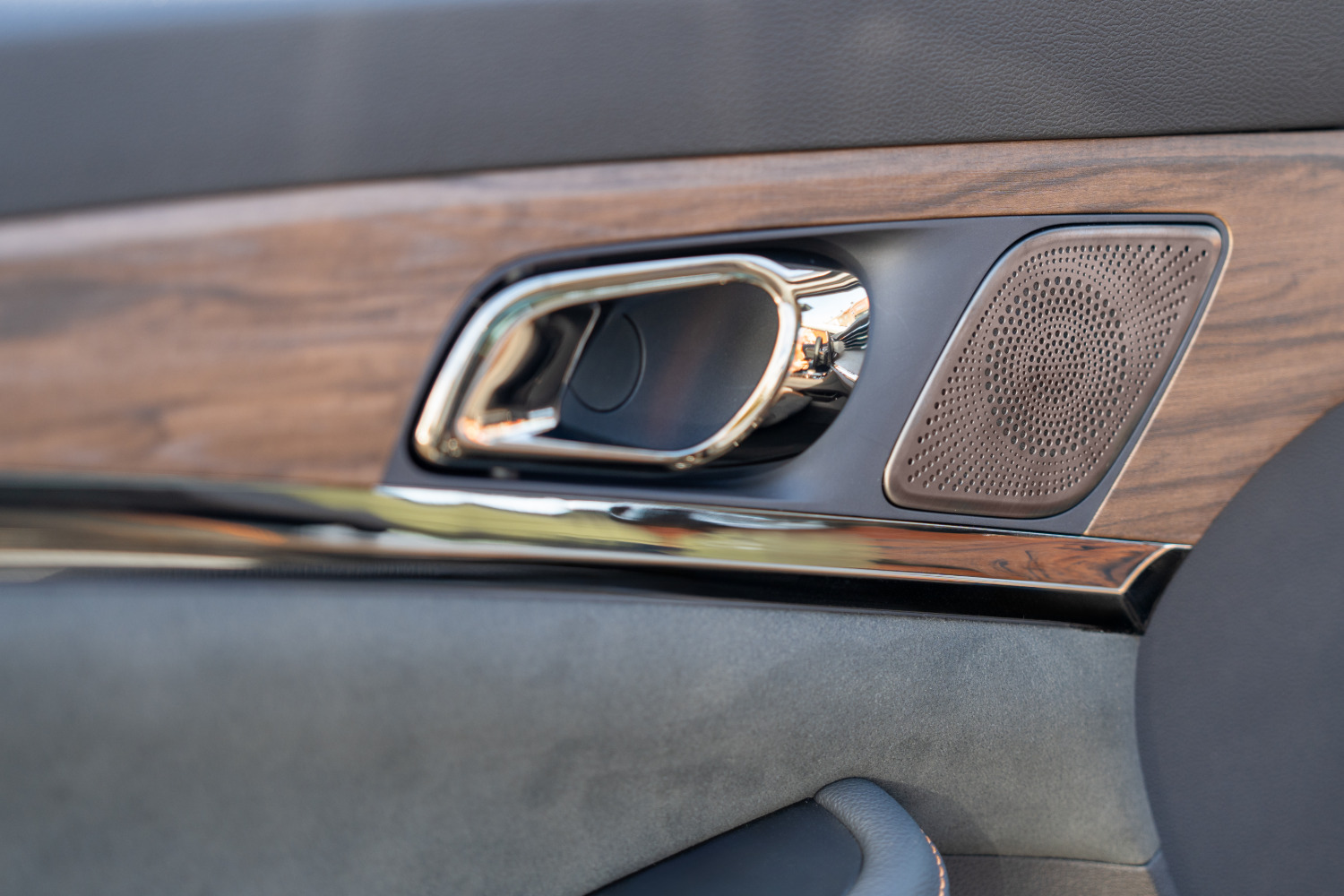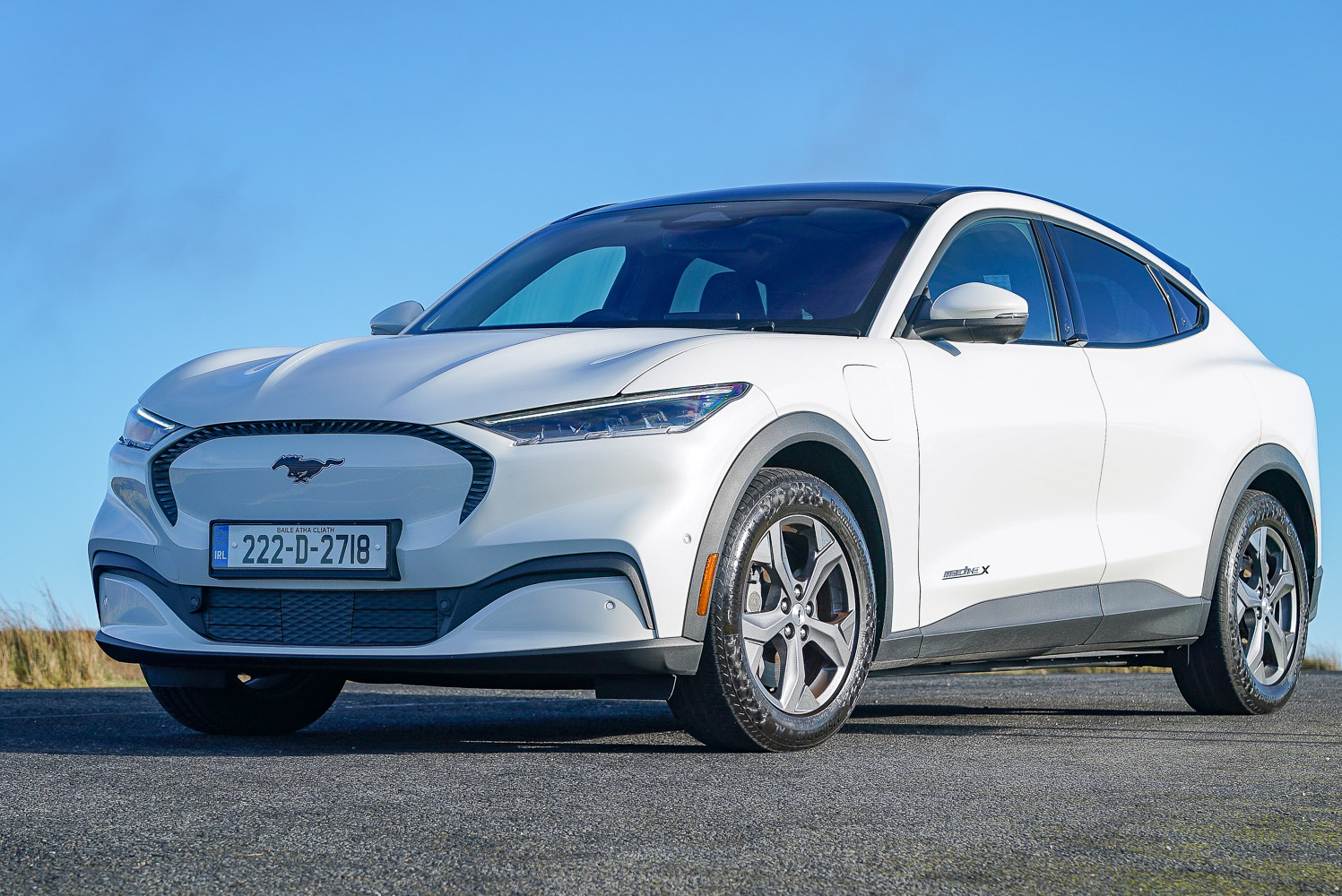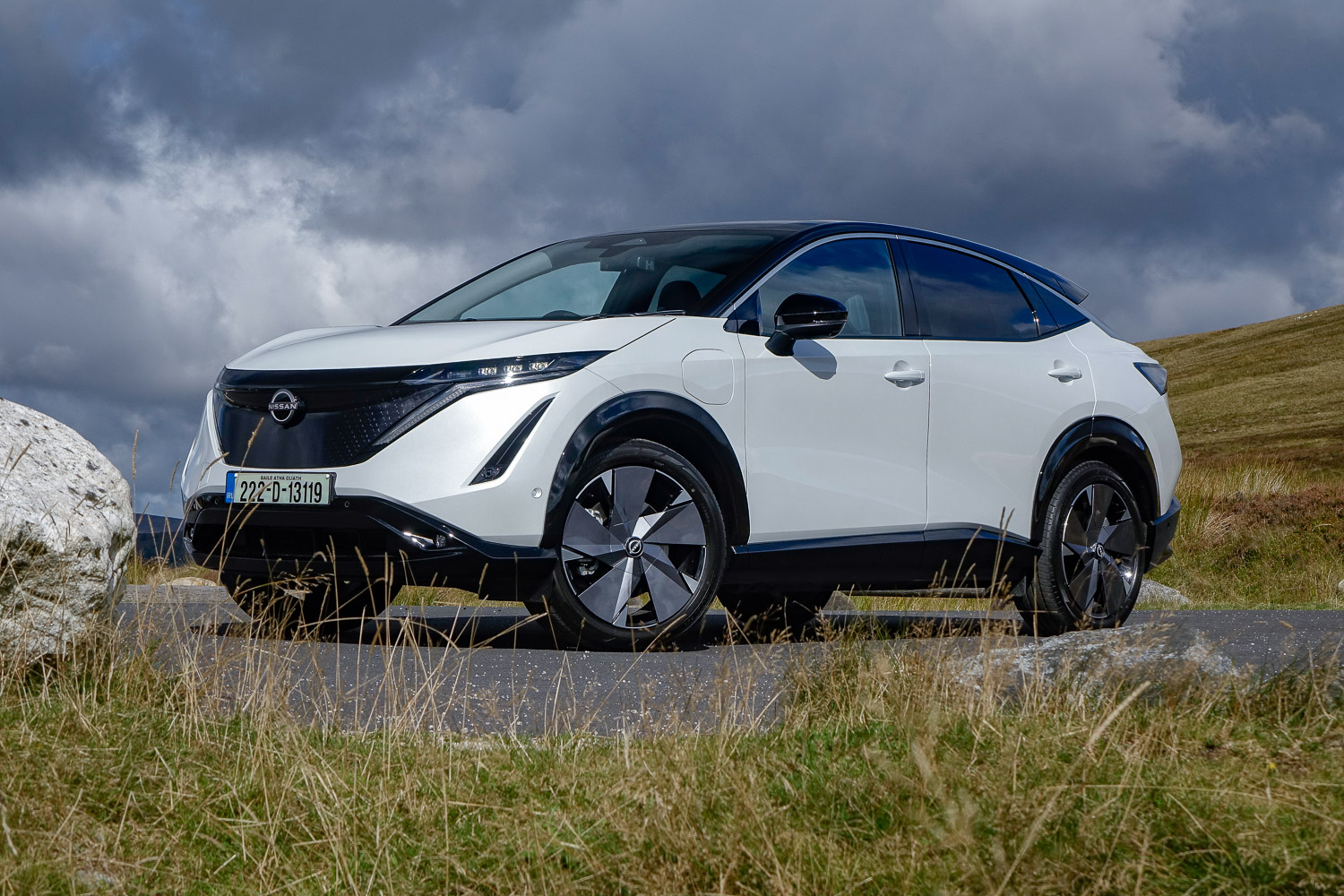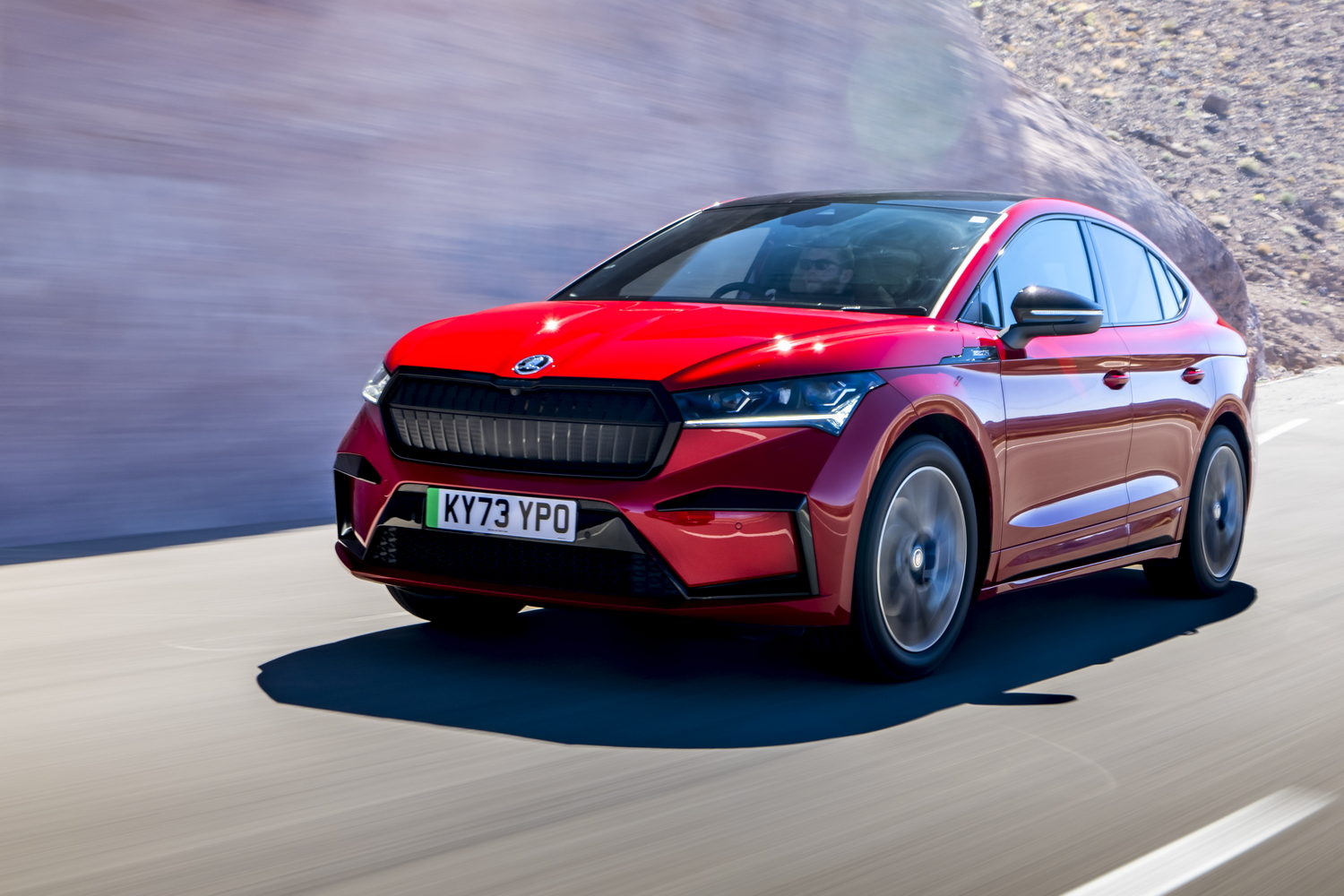Another day, another Chinese manufacturer you’ve never heard of producing an all-new electric vehicle (EV) with a daft name that’s going to take Europe by storm. This time it’s Skywell stepping into the frame with its first-ever passenger vehicle, the BE11, a midsized SUV. Ambitiously targeting some of the finest EVs from Europe, Japan and America, even if we’d reckon it was more of a rival for cheaper electric SUVs such as its BYD Atto 3 compatriot, the Skywell BE11 comes with some interesting plus points, but - as we shall see - some very significant drawbacks, not least the way it drives. We tested it over in the UK to see if it would make sense for the Irish market.
How big is the Skywell BE11?
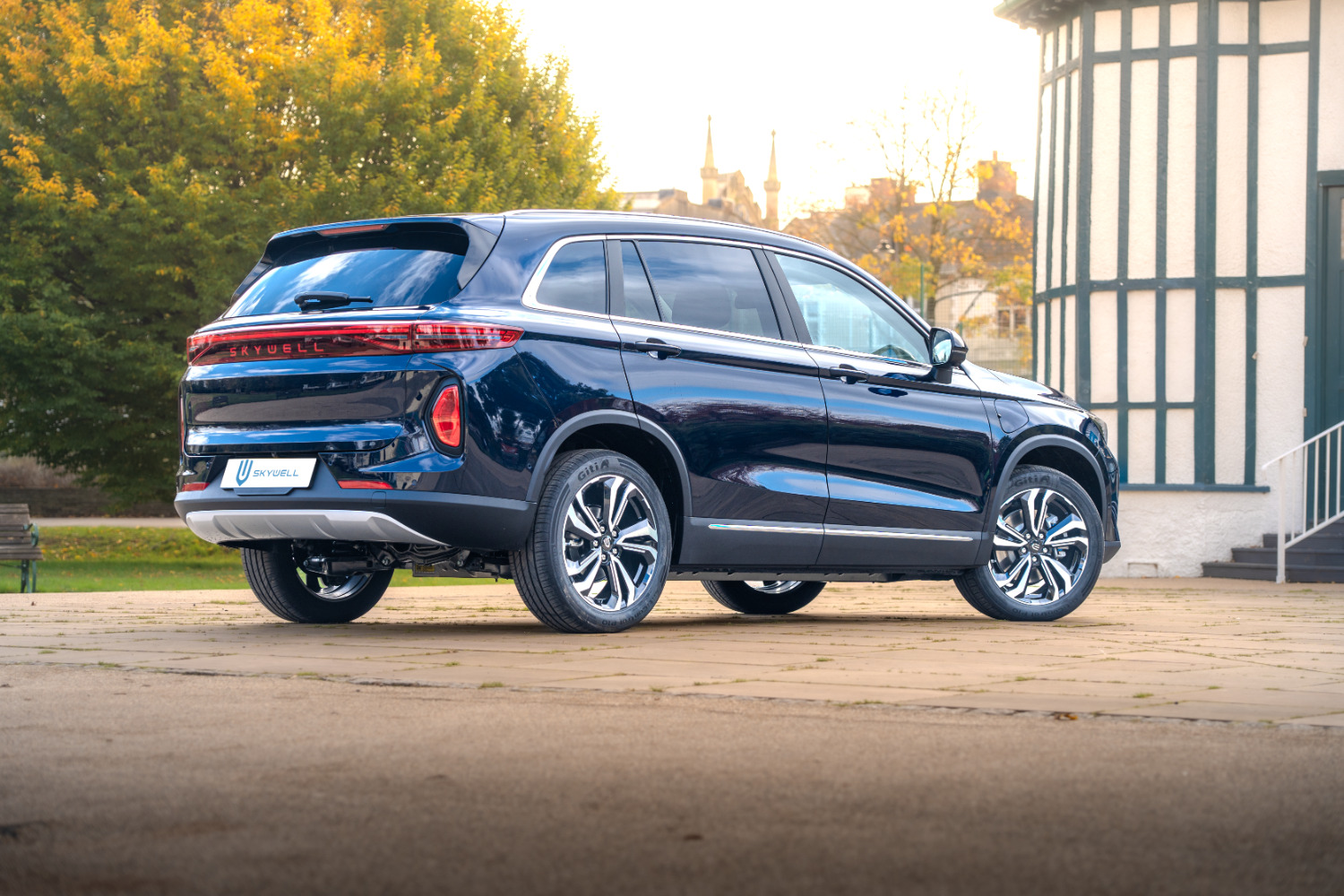
Measuring 4,720mm long, 1,908mm wide and 1,696mm tall, the BE11 is referenced as a C-segment SUV but it’s physically quite a bit bigger than any of the usual suspects in that class; presumably why this upstart Chinese firm thinks it can take on some of the rivals that it is unrealistically targeting. The space between the wheels is a generous 2,800mm, which is to the benefit of interior passenger room, but one thing you can’t see about this SUV is that it’s comparatively light - even in this 86kWh Long Range format, it tips the scales at less than two tonnes, which is good going.
Which SUVs does the Skywell BE11 remind me of?
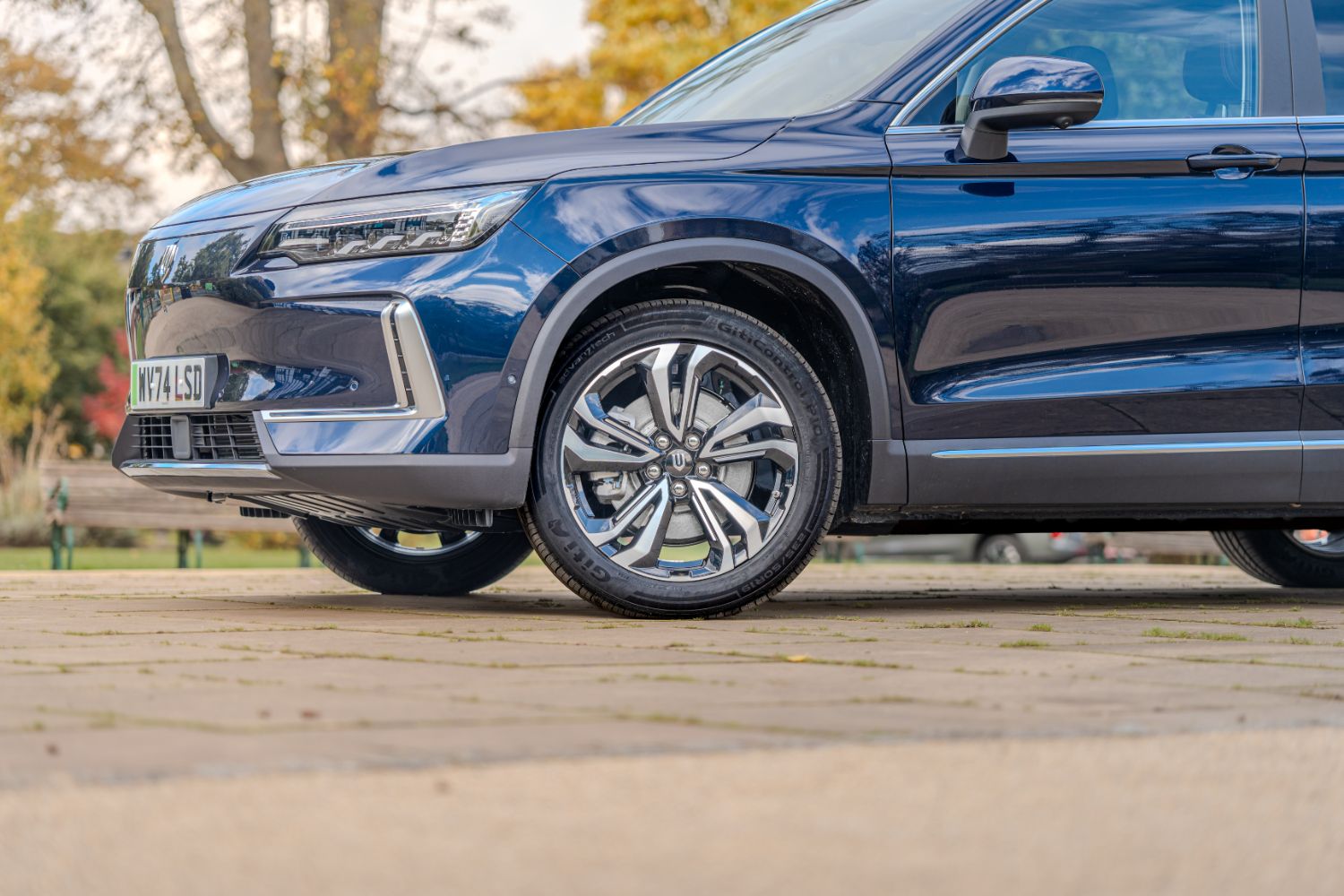
As it’s sort of generically inoffensive to look at with no clear identity of its own, probably all of them. But it doesn’t overtly copy any one specific rival we can think of, even when we stare at it for a good length of time as we think we’ve finally found a small degree of aesthetic plagiarism. Aside from its weird ‘Trident’ emblem - it’s not a trident, it’s a stylised ‘W’, but we’re sure Maserati’s people will be on the phone before too long - the de rigueur light-bar-type design on the boot lid (bearing the ‘Skywell’ legend within it) and its snub-nosed appearance, it’s otherwise unremarkable to gaze upon without being ugly.
A look inside the Skywell BE11
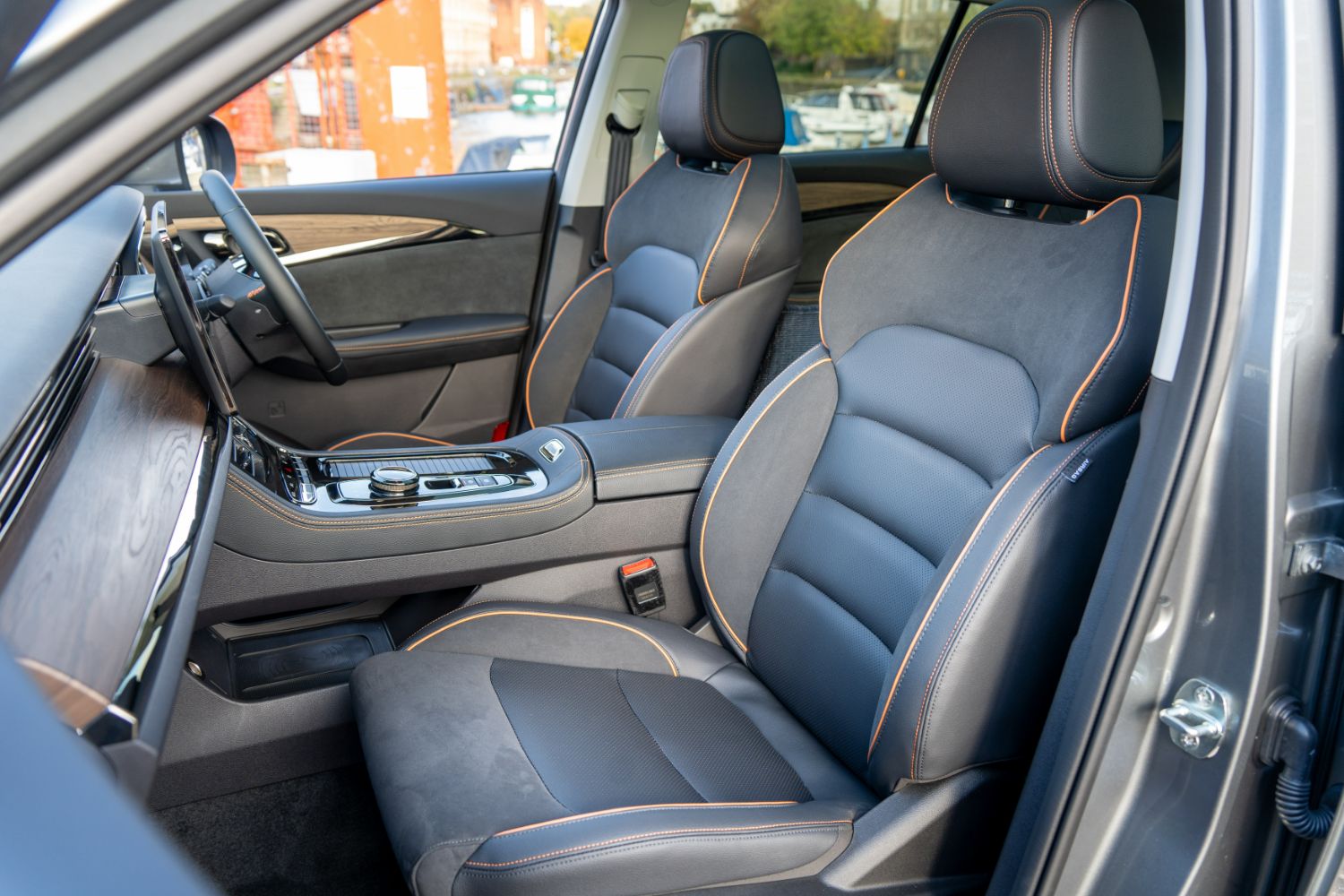
This is one of the newcomer’s stronger points. It’s by no means beyond reproach inside, as there are plastics lower down that show exactly where the development costs have been kept to a minimum, while the column stalks feel incredibly flimsy, but generally other materials seem fairly decent throughout.
The seats are apparently real Alcantara, with a capital ‘A’ and all, and faux leather, while they’re electrically adjustable in the front. The driving position is odd, though, as you feel perched on the BE11 rather than sat in it, and while the steering wheel adjusts manually a long way for reach, the rake variance is so pitifully small that you might as well not bother with it at all. But there’s a generally good feel and commendably clean look to everything, so it’s definitely not a cabin without merit.
The Skywell BE11’s on-board technology
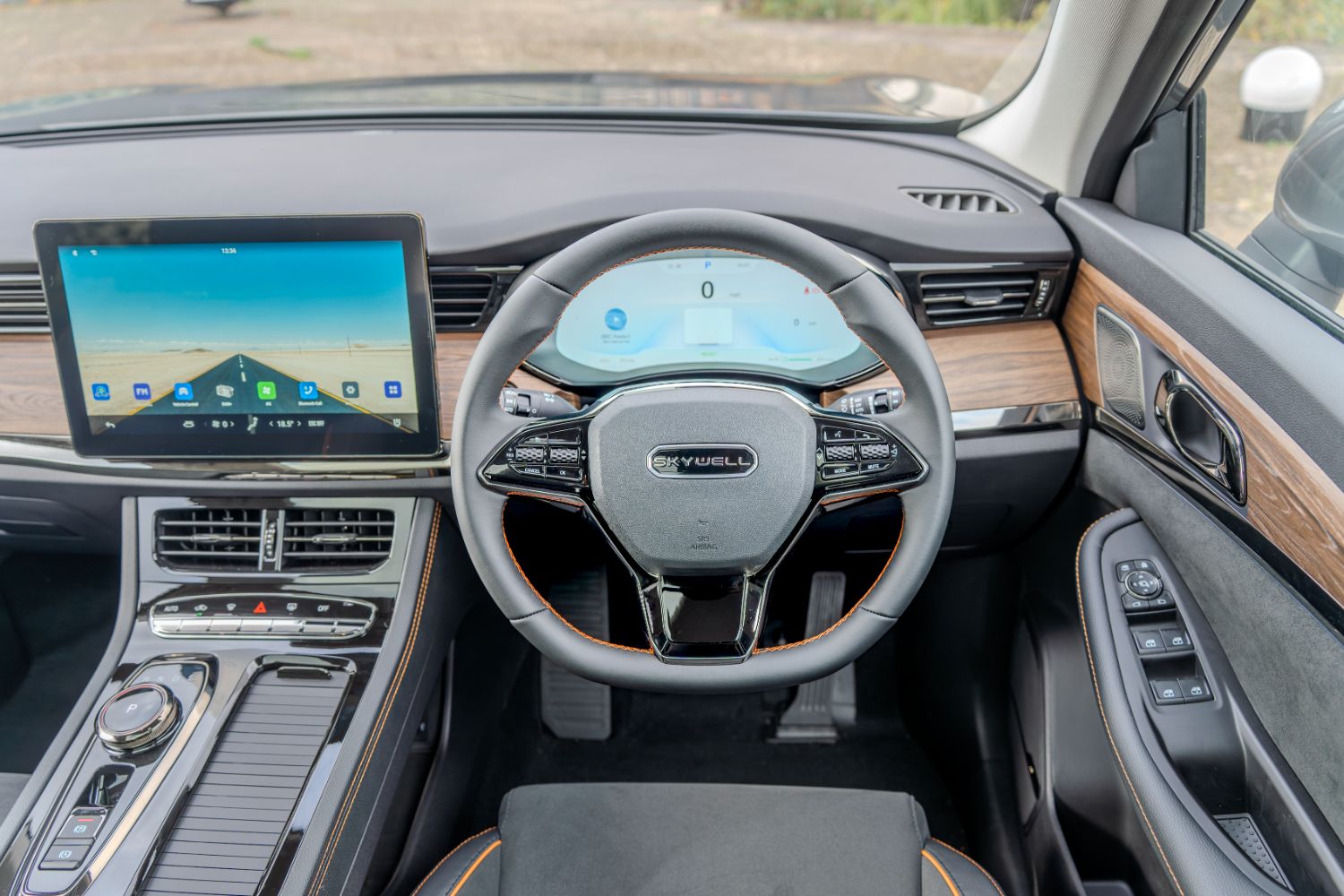
Early reviews of a pre-production Skywell BE11 were less than favourable because it was using a lot of the ‘wrong’ equipment that won’t be on production versions, with one of the issues being a whopping great 15-inch infotainment screen that won no fans. Well, that last item has been replaced by a 12.8-inch unit for the showroom models. This is a... mixed bag. Graphically, it’s good and it responds slickly enough to swipe-and-tap inputs, but the proprietary navigation is amusingly called TurboDog9 (and we couldn’t get it to do anything) while some of the menu layouts and control icons are baffling to operate and/or way too small.
You can bypass it with wireless Android Auto or Apple CarPlay, thankfully, and beyond that the Skywell SUV has a 12.3-inch LCD driver’s cluster (not in any way configurable aside from being able to switch the colours from day into night mode and vice versa), wireless smartphone charging, an 8.1-speaker Metz surround sound system, a panoramic opening glass sunroof and a 360-degree camera system - or, at least, it ought to as standard for right-hand-drive markets like ours.
Driving the Skywell BE11
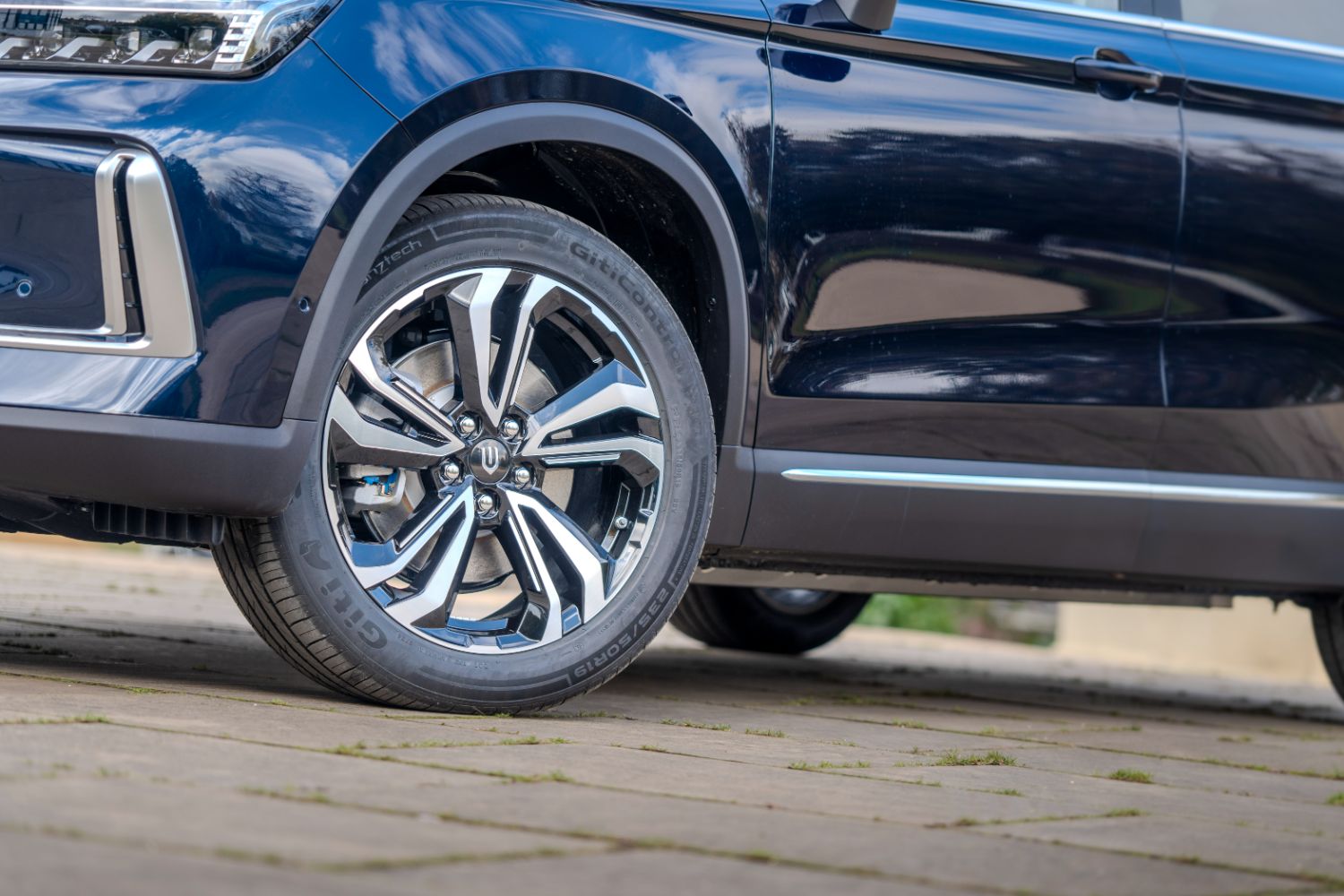
The Skywell BE11 does precisely nothing good in a dynamic context at all and everything very, very badly indeed. And yet its on-paper spec looks so innocuous: it uses a single 204hp electric motor (borrowed from BYD) on the front axle, developing a useful 320Nm to deliver a 9.6-second 0-100km/h time. It should be nigh-on impossible to mess this up. Somehow, Skywell has spectacularly managed it. The company should win whatever the motoring equivalent of a Razzie award might be.
A huge part of the issue, we suspect, is the tyres. They’re called - and we’re not making this up - ‘Giti GitiControl P10s’. This is a company which makes the rubber for Chinese commercial vehicles. At what point Skywell thought the tyres from a lorry chugging around remote parts of its homeland would be suitable for work on a passenger car destined for European roads is not precisely clear, but whenever it was, it was a monumental ball-drop moment on the company’s part.
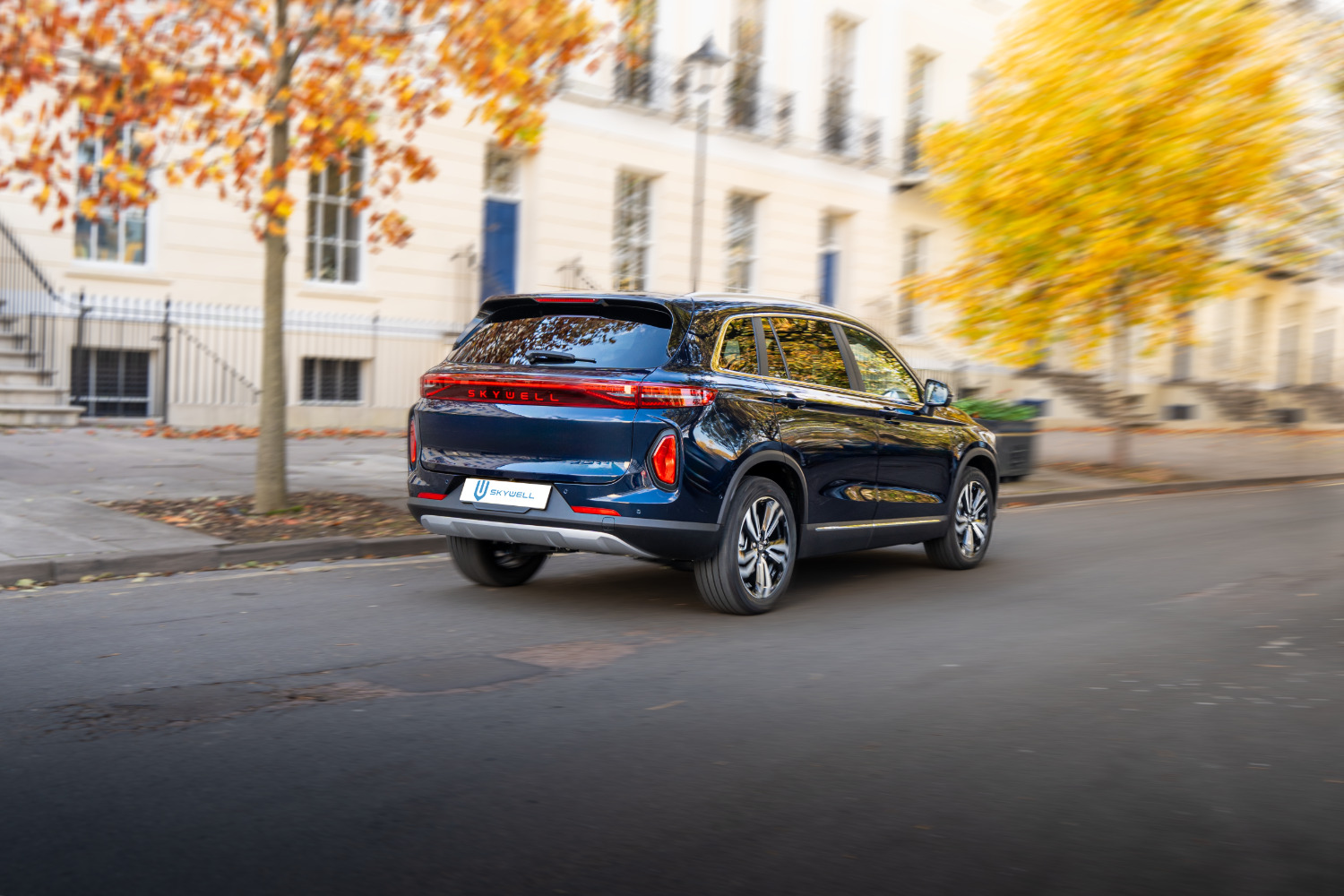
For a start off, the BE11 cannot put its meagre power and torque down without furiously spinning its front wheels. The traction levels are laughable and will see you leaving junctions and exiting roundabouts with what you thought were only modest levels of accelerator input with a cloud of tyre smoke trailing shamefully after you. It’s embarrassing how poor is the hold the front wheels have on the tarmac, and don’t ever bother turning off the apparently ineffectual traction control. One, it’s nearly impossible to find it on the fiddly touchscreen, and two, you’ll thoroughly fry the front tyres the minute you go near the accelerator. As if to reinforce the point, the system will automatically reboot itself if it thinks the Skywell is struggling to find grip. The Skywell is always struggling to find grip.
Then there’s the suspension, which is a hideous, soggy mess. With 50-profile tyre sidewalls and no attempt to be sporty whatsoever, you might think the BE11 can summon up a semi-comfortable ride and a reasonable degree of rolling refinement. Think again. While it never bangs over bumps nor has that jittery, firm-edged response of tuned-up springs and dampers that can lead to an uncomfortable gait in big-wheeled cars, the hopeless way the Skywell tries to control its blancmange-like body movements in the aftermath of only modest lumps in the road would be comical, were it not verging on the point of being petrifying. This is a softly sprung car to the point of, at times, feeling like an out-of-control bouncy castle in a particularly fearsome gale. So, it’s not comfortable to ride in, and it’s not quiet either, those Giti tyres generating a thunderous cacophony at only 80km/h on smooth surfaces.
The handling? There is no handling. None whatsoever. There’s so much lean, pitch and dive involved with only moderate exertion of the BE11’s drivetrain and chassis that you’ll be feeling seasick if you even dare to think about hustling it along a challenging road at anything more than about 20 per cent of your driving capabilities.
This isn’t a problem, though. As you will in no way want to even remotely test the chassis’ limits of control due to two things: these being the worst brakes and the most alarming steering we’ve ever encountered in any car, ever. And on that latter score, remember we’ve driven all of the original Land Rover Defender and Mercedes G-Wagen models, and an Infiniti Q50 with steer-by-wire as well.
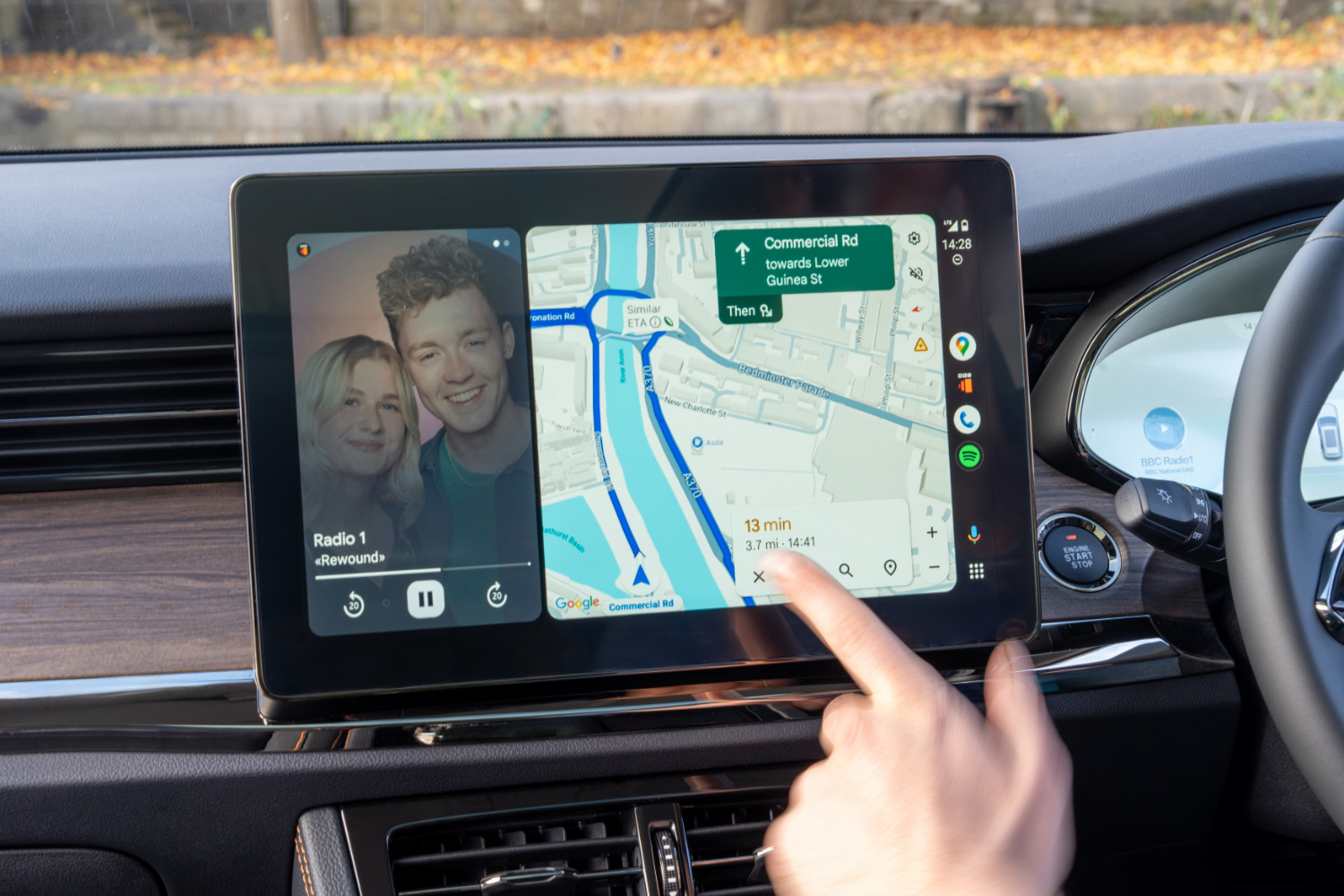
The brakes are nothing short of abject. If you’ve ever been in a conventional car that has boiled its brake fluid after a bout of hooligan-like driving, you will have just a fraction of the conception of what the left-hand pedal in the Skywell BE11 feels like. It has a revolting and slack springiness to it when the car’s standing still, and bizarrely a spongy inch of dead travel at the top of its movement when you’re driving. Get through that and two things will then happen: if you’ve got the brakes in their gentler setting, you’ll have zero pedal feel and will think you are about to have a crash because there’s next to no sense the BE11 is slowing down; or, if you’ve got the Sport mode on, they’ll at least feel like they’re biting... until you get to low speeds, where they act like they’re over-assisted to the point of a 1990s chassis engineer’s fever dream and you slew to a halt as if you were a timid learner driver on their first-ever lesson. Awful.
Oh, and regen? There are two sliding scales on the digital touchscreen, one to control the brightness of the instrument cluster, one for the level of regenerative braking. Both are marked 0-100. For the former, if you slide your finger left and right, it simply jumps through four settings - 25, 50, 75 and 100, and the display dims or brightens accordingly. Bit odd, they could have just been labelled 1, 2, 3, 4, but OK. So, what about the latter? It does the same, right? Wrong. It has one hundred settings. You can select every number from nought all the way up. Why?! How the hell is anyone going to discern the difference between regen level 48 and regen level 53?! You need three settings for regen brakes, at most. And here’s a hint, Skywell: one of them needs to activate a one-pedal driving mode. Having 100 variations and no one-pedal setting is just bizarre.
But not as bad as the steering. There are three modes here, which are Comfort, Normal and Sport. If we say Sport is the only one usable on the road, it is the lesser of three evils. The weighting is powderpuff and the feedback non-existent, so you have precious little idea what your front tyres are up to. But don’t, whatever you do, put it in Comfort. If this setting has any connection whatsoever to the BE11’s front wheels, we’ll paint our backsides blue and show them to the moon. It is appalling. Completely, and totally, appalling.
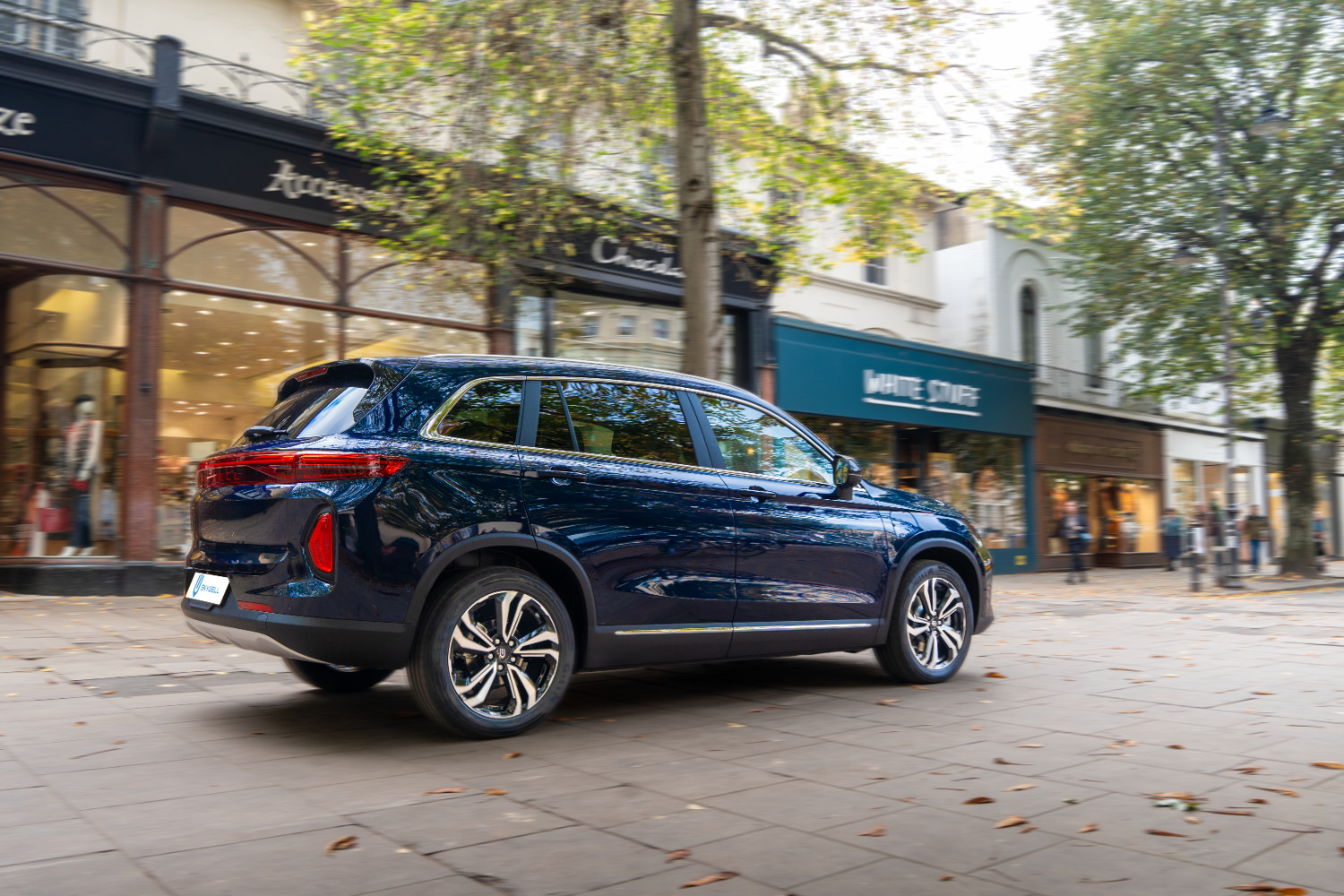
The grip, the traction, the steering, the ride comfort and the rolling noise could all possibly be improved by fitting a decent set of tyres to the Skywell BE11, if we’re offering the company a glimmer of kinematic redemption here. But no amount of good rubber is going to solve the woeful brakes and the horrid suspension, so we cannot possibly recommend this Chinese SUV to anyone without the company first going back to the drawing board with regards the inept chassis tune.
But yes, team the seemingly gripless tyres with the hopeless steering, brakes and damping of this car, and it’s just rubbish.
How practical is the Skywell BE11?
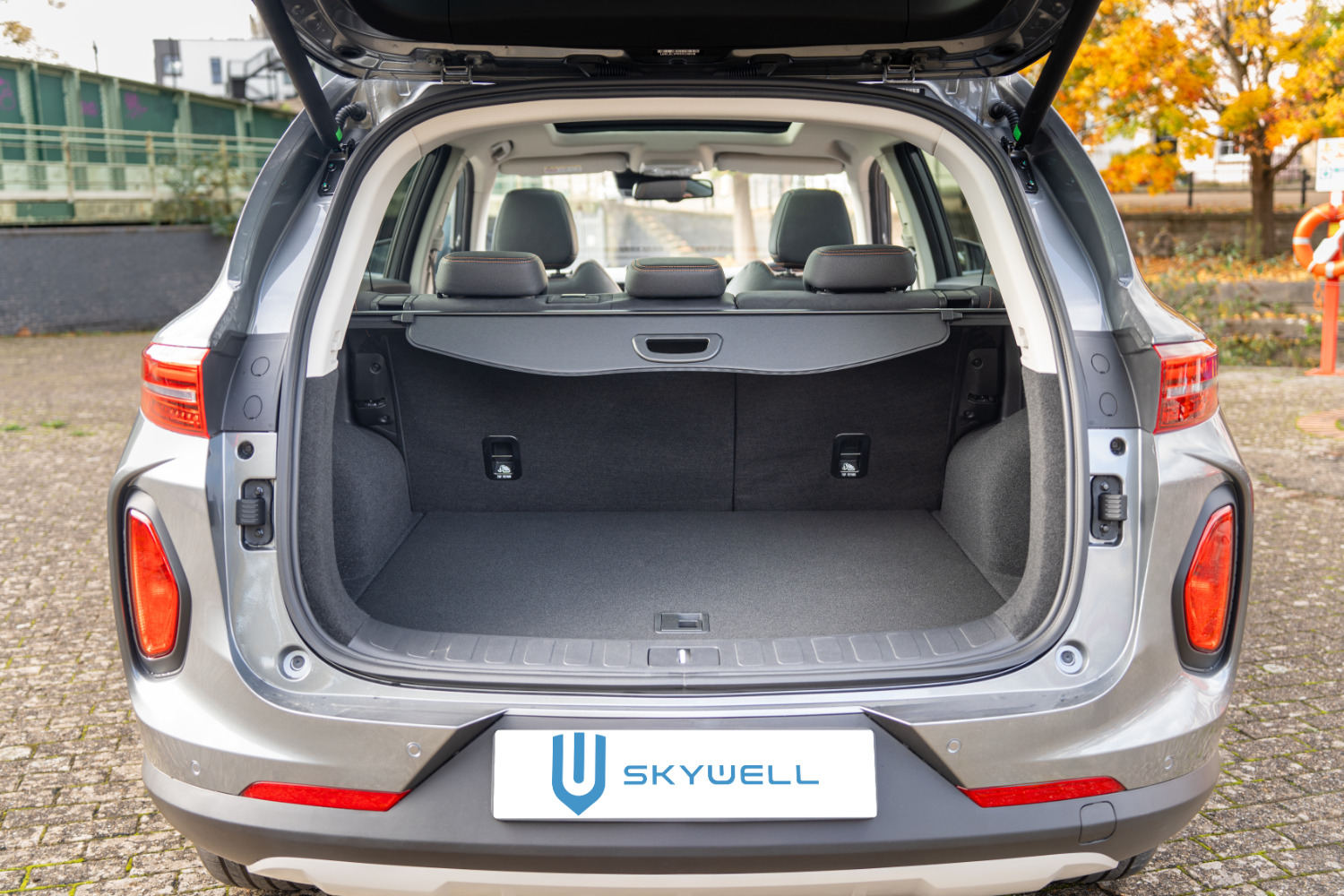
There’s acres of legroom in the back, good headroom all round, a 467-litre boot with all seats in use and 1,141 litres if you drop the 60:40 split-folding rear seats flat, so the Skywell looks promising in this regard. Until you try and fold those rear seats down. To get them all the way flat, you have to move the rear bench’s entire base cushion out of the way. And also unclip a large, unwieldy electrical connector under the squab. It’s arcane.
There’s also no front boot. Just a vast expanse of plastic under the bonnet. Which has no hydraulic struts to help you raise it, so make sure you’ve done plenty of arm work in the gym before you try and lift this massive sucker up to see for yourself that, yep, all the bit at the front of the BE11 is just wasted space.
How many child seats can I fit in the Skywell BE11?
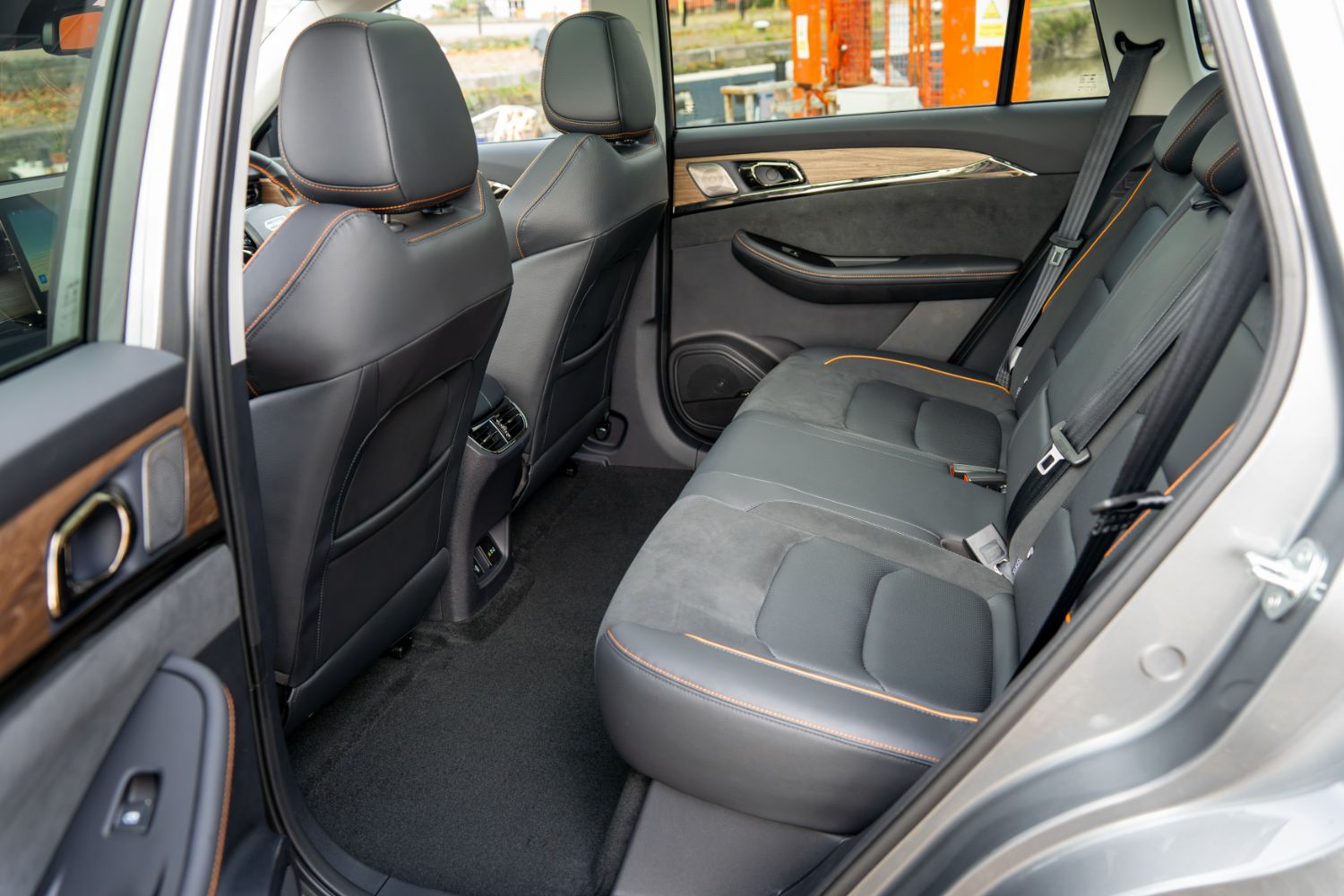
There are two ISOFIX points in the outer two rear seats of the Skywell BE11, but no matter how grotesquely naughty your children have been, they could never possibly deserve a punishment anything like as severe as having to travel in this Chinese SUV.
How safe is the Skywell BE11?
Euro NCAP hasn’t assessed it yet, but we’d be surprised if it comes out with anything other than a poor score - or even zero stars. This is because the Skywell BE11 has only a smattering of advanced driver assist systems but lacks for some notable basics such as lane-keep assist.
What’s the electric range of the Skywell BE11?
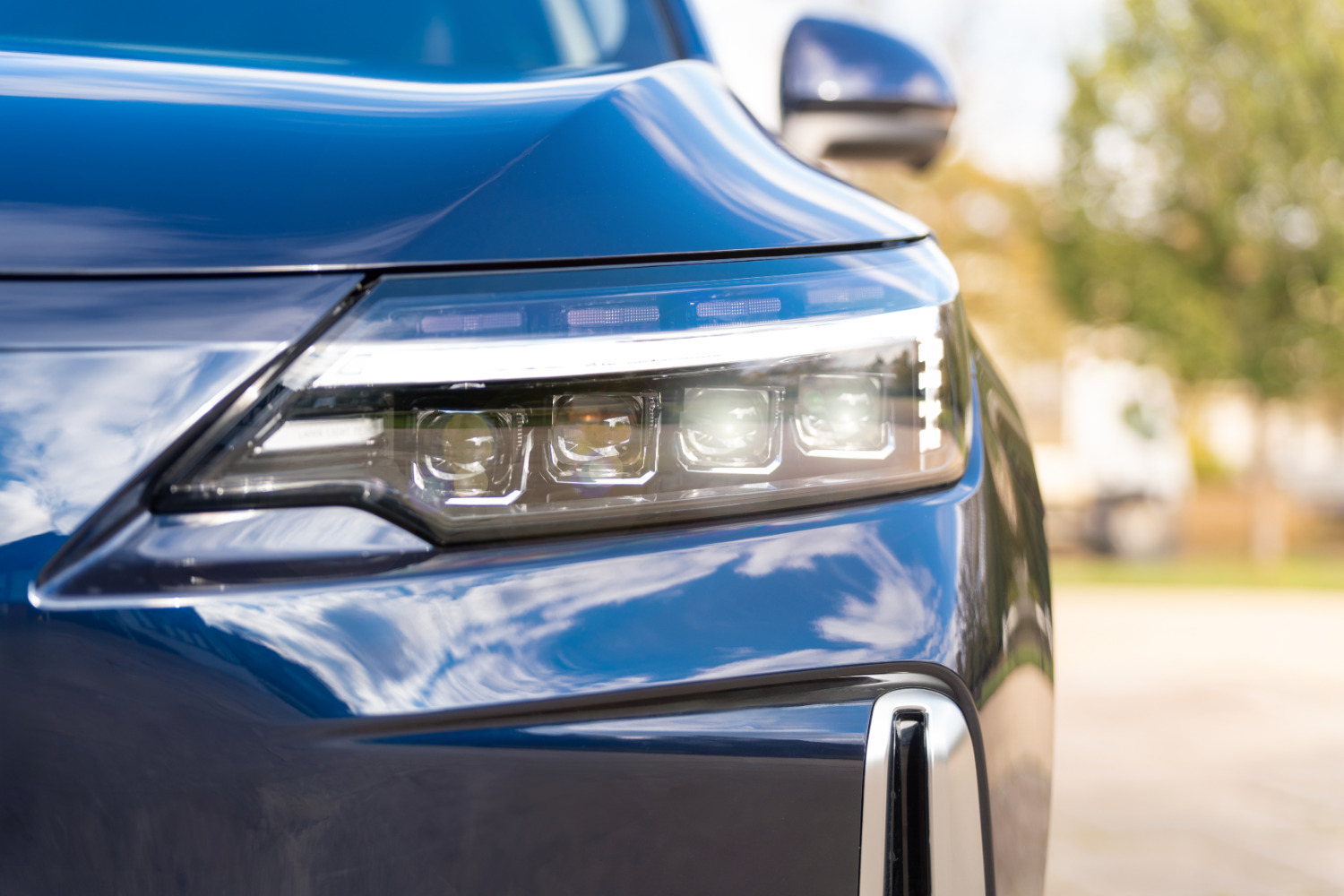
Weirdly, the BE11’s electric motor comes from BYD, but not the battery packs. These come from Funeng (72kWh) and Weineng (86kWh) respectively, and they’re not the usual LFP make-up, but nickel manganese cobalt (NMC) instead. Skywell reckons this means you’ll get much closer to the official 400km and 490km official range figures, for the Short Range and Long Range, respectively, as NMC batteries are less susceptible to the cold than LFPs, but it also results in mediocre charging times - at its 80kW fastest, 20-70 per cent (not even the usual 10-80 per cent) will take 45 minutes - and what looks like poor electrical efficiency. An 86kWh battery pack giving less than 500km of range is not great by current standards.
The reasons you’d buy a Skywell BE11
Truthfully? We have none. The Skywell BE11 is OK to look at, has an acceptable cabin, comes with plenty of kit as standard and is spacious, but all of these ‘benefits’ are undone by its truly hideous driving manners. There’s no guarantee it will come to Ireland, and if it does then it might at least be cheap (although it certainly isn’t that much of a bargain over in the UK), but if Skywell does decide to bring the BE11 to Ireland, avoid it. Like the plague. Absolutely every other electric SUV of an equivalent size, price or performance level is comprehensively better than it is.
Ask us anything about the Skywell BE11
If there’s anything about the Skywell BE11 we’ve not covered, or you’d like advice in choosing any car, you can avail of our (completely free) expert advice service via the Ask Us Anything page.

